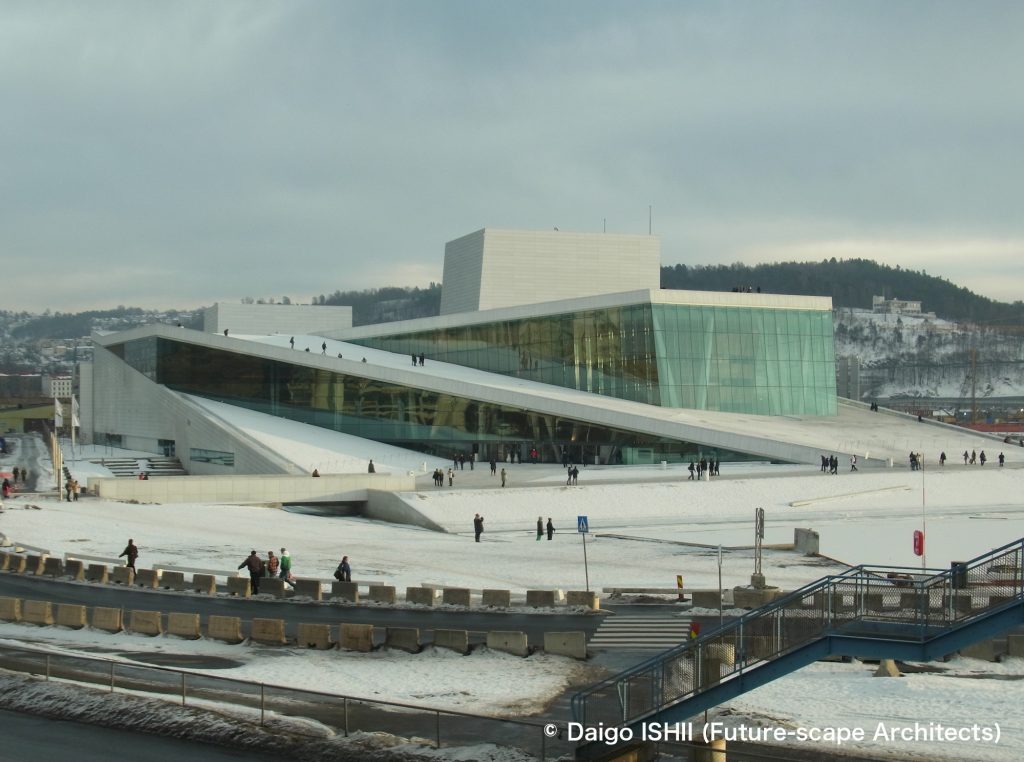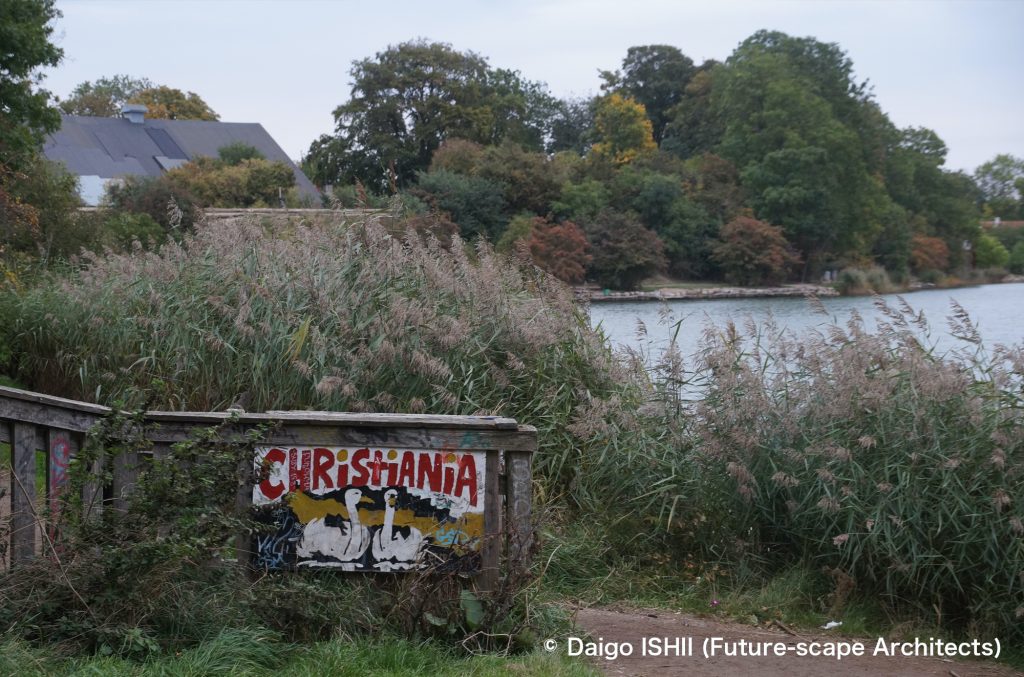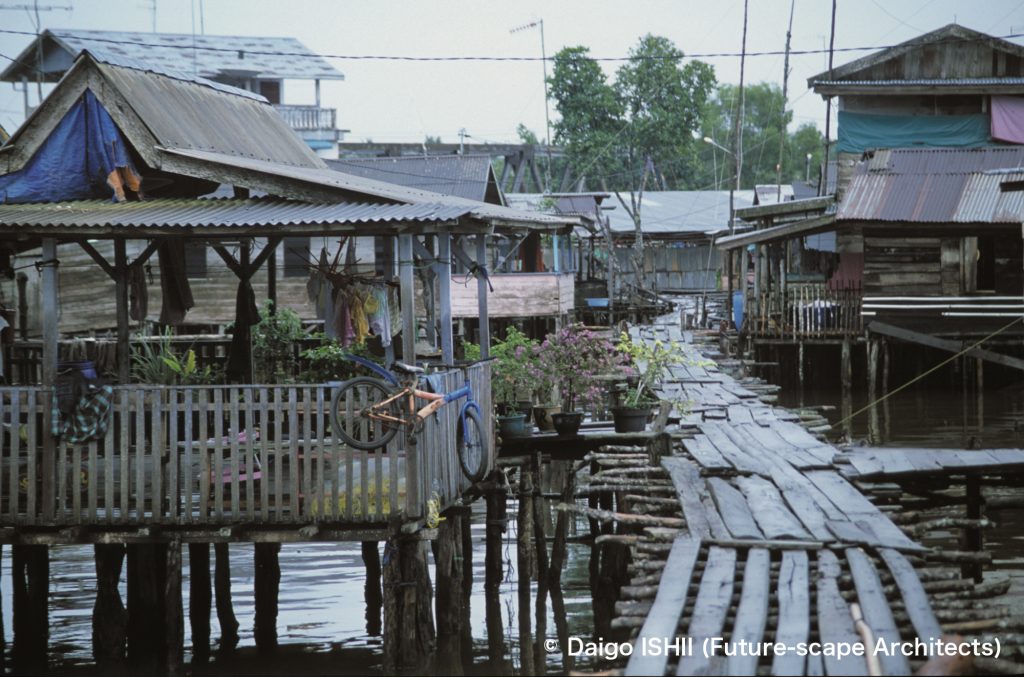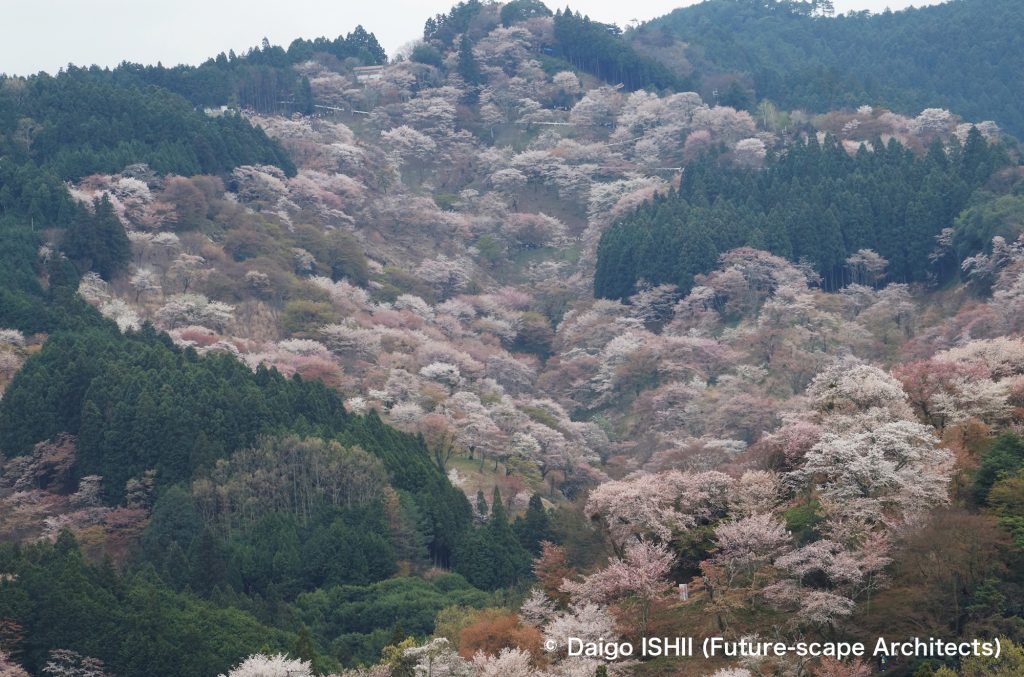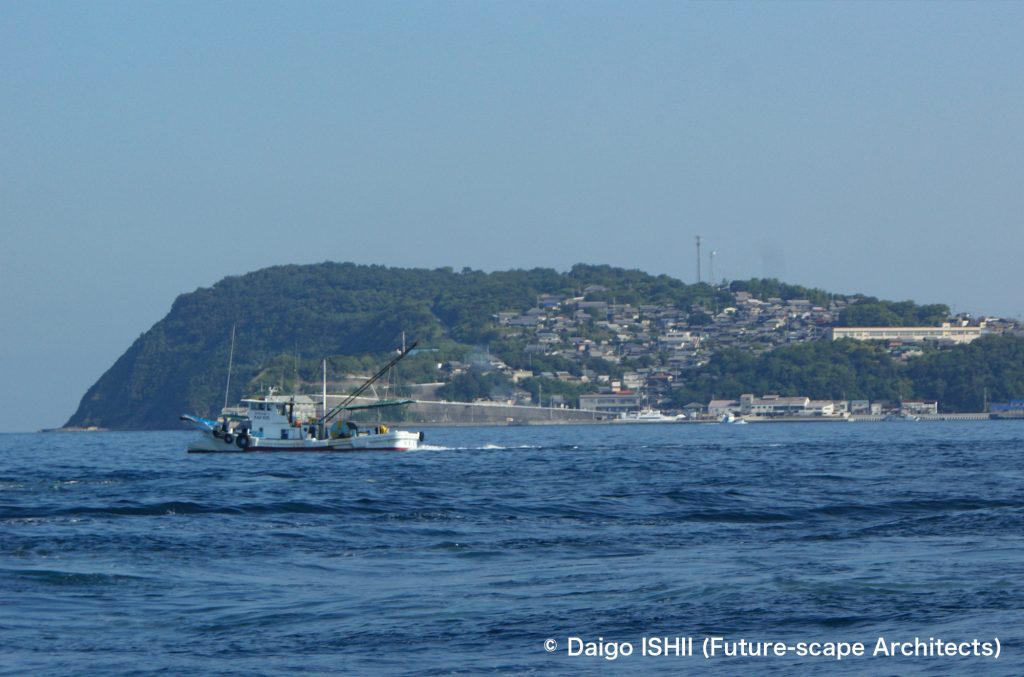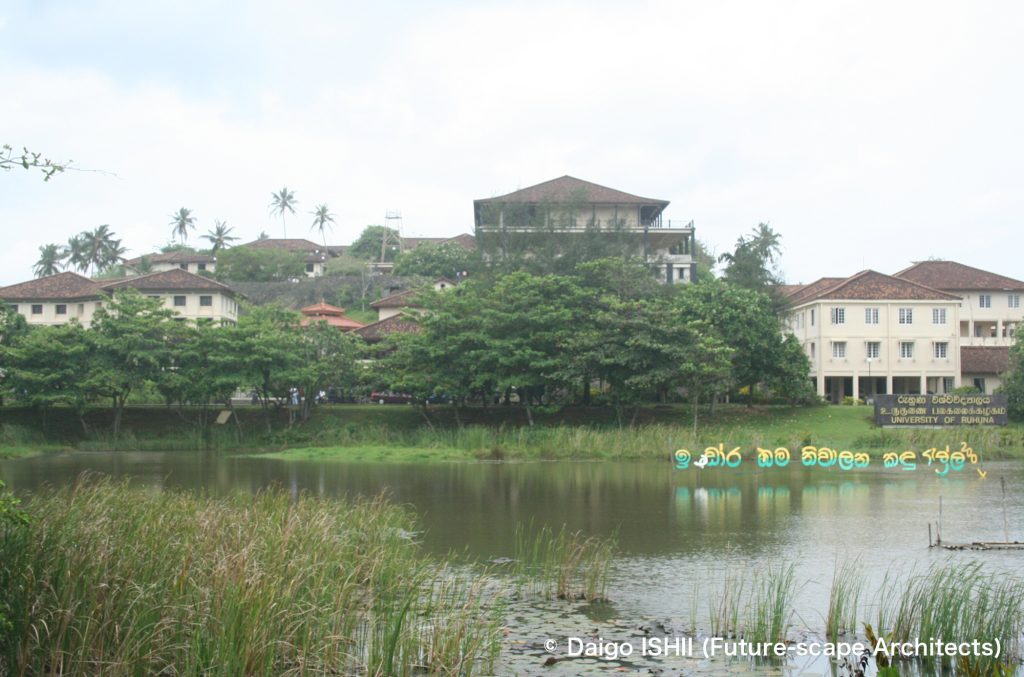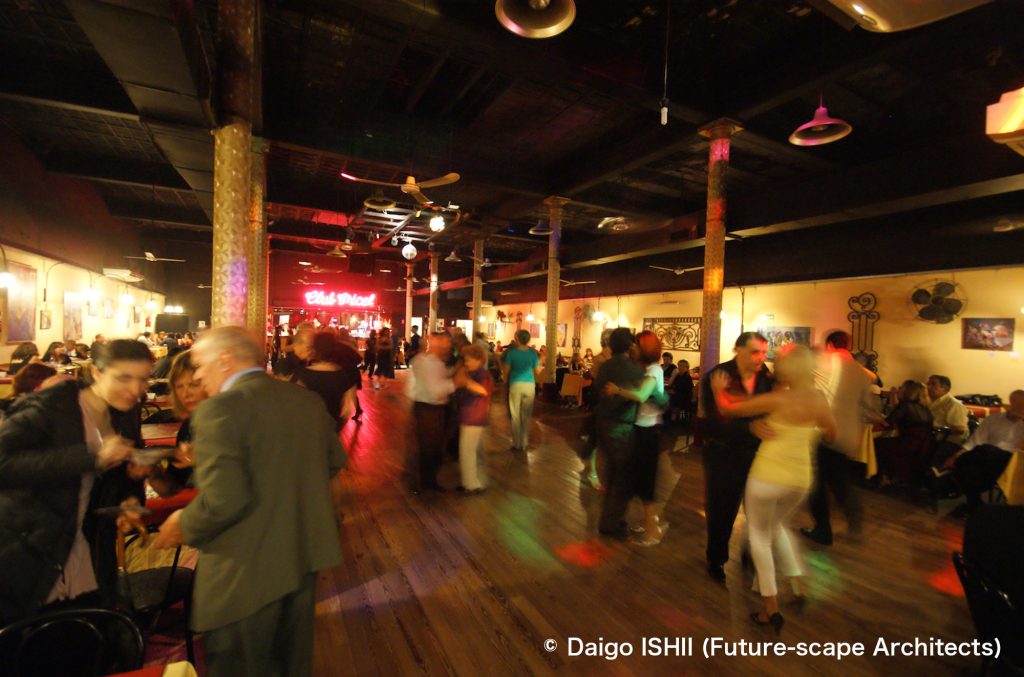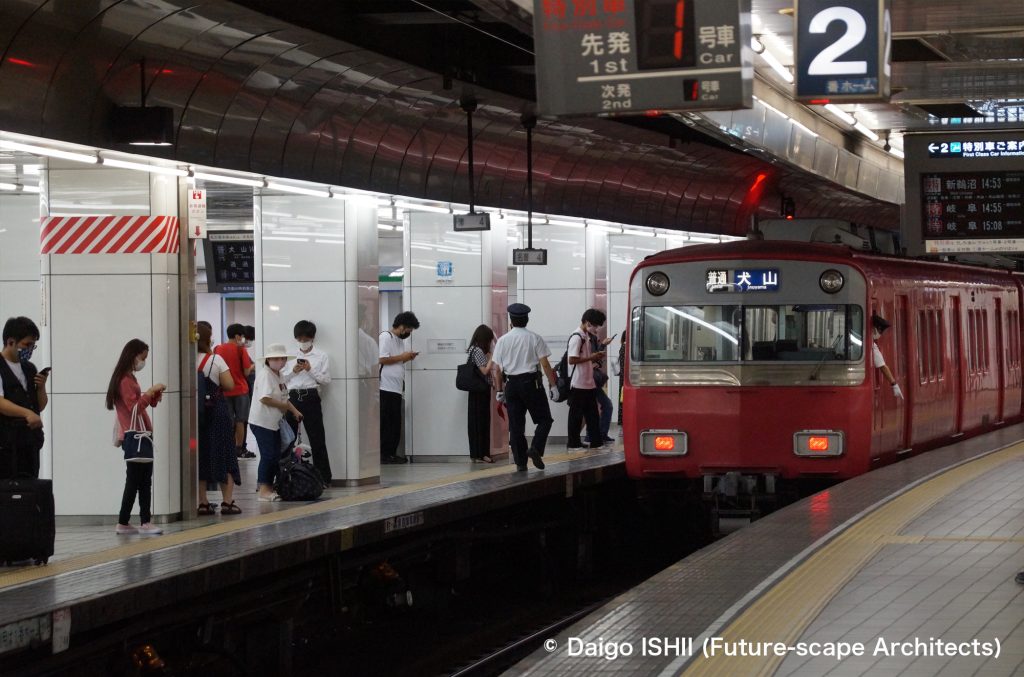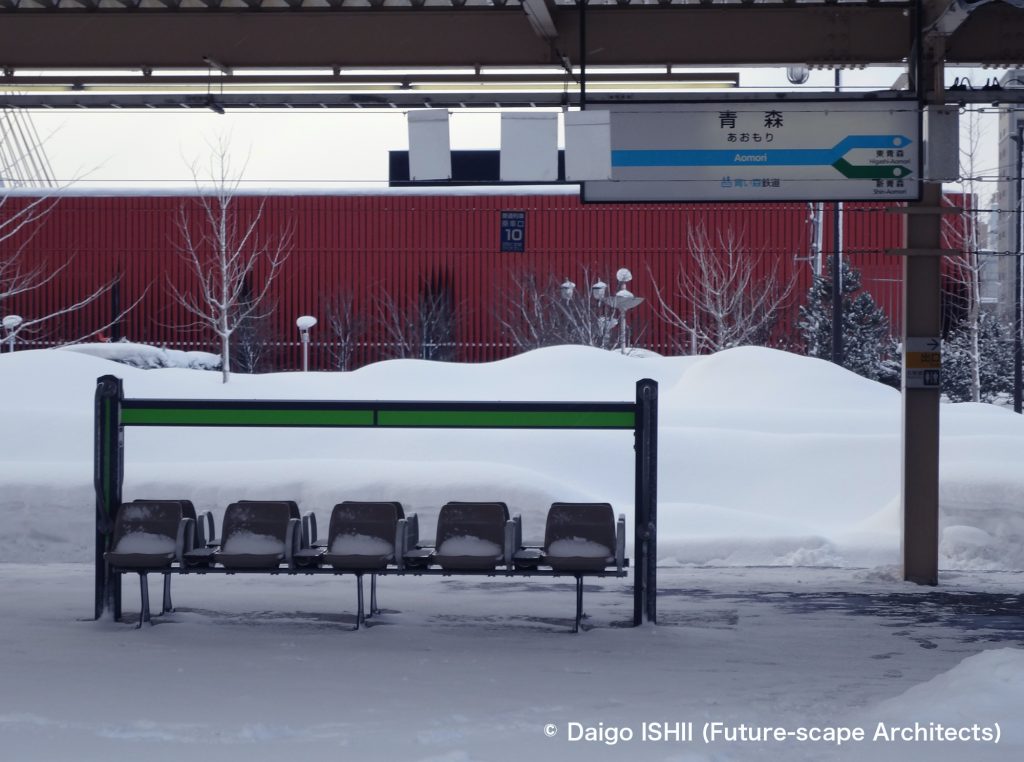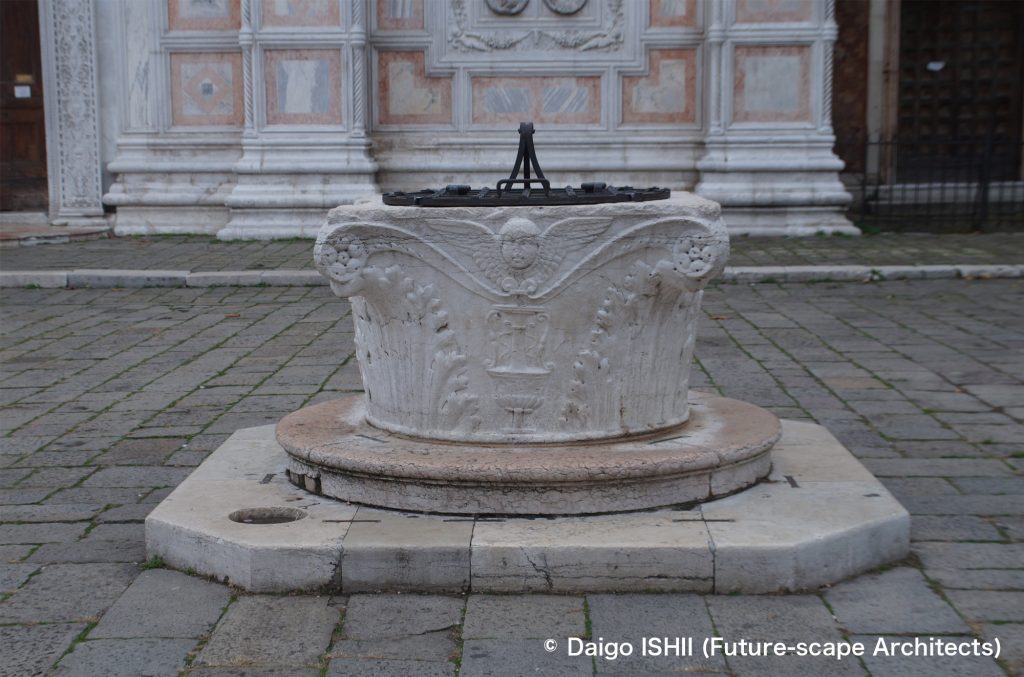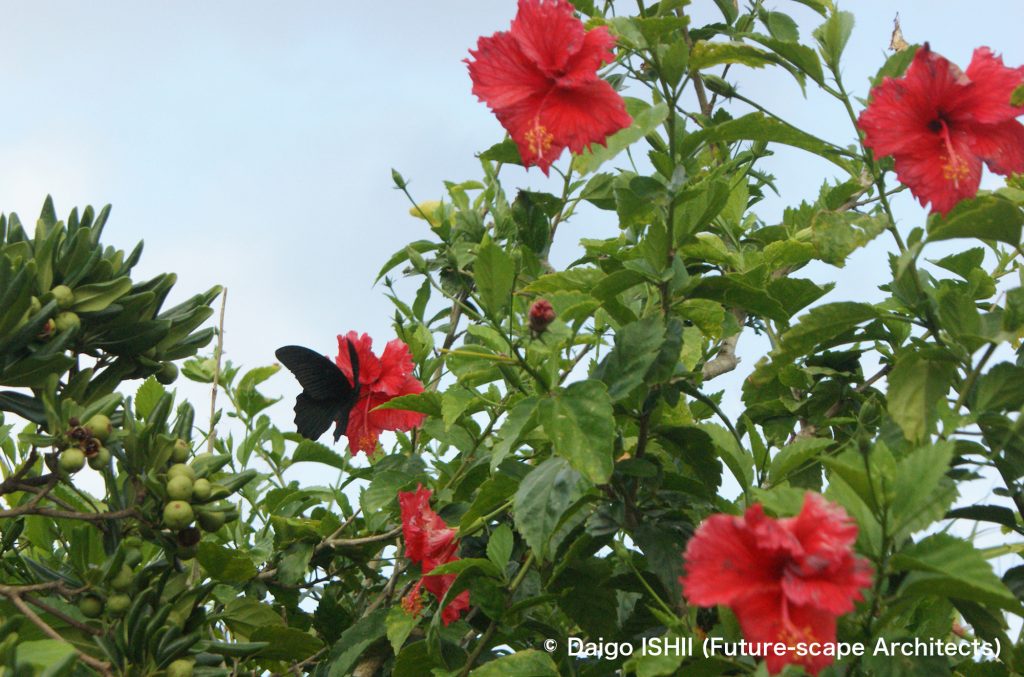The English word “landscape” includes scenery, landscape, townscape, topography, and etc. One of the attractions of art festivals set in local places is the landscape. It is completely lacking in the exhibition room of an ordinary museum with horizontal floors and vertical walls.

At the Echigo-Tsumari Art Triennale, "Where Has the River Gone?'' by Yukihisa ISOBE in 2000 was the first artwork to sublimate the landscape into a splendid one. Yellow flags are put up in the rice fields along the Shinano River to express the flow of the old Shinano River. It conveyed not only the changes in the course of a river, but also the history of reclaiming rice fields, agricultural problems, and the existence of the residents who raised the flags. It brought various phenomena into multiple layers. He could set the stage on vast farmland since this art festival was executed on a regional scale.
In the early summer of the off-season of the art festival, I happened to pass by the Shinano river bed. Tulip flowers fell from the sky like rain. I hurriedly approached it and found contemporary dancer Kazuo OHNO performing in the rain of flowers. Yukio NAKAGAWA famous for artworks using flowers collaborated with him. It was a blissful time to put myself in the rain of many flowers. A landscape of a vast river bed, where a helicopter can fly and scatter flowers, realized this artwork. Unfortunately, I had no camera and couldn't take pictures.
Some artworks made attractive landscapes into art, meanwhile, some artworks changed unattractive landscapes into art. "Tunnel of Light" was created by MAD Architects in 2018. Kiyotsukyo valley, which is famous for its columnar joints, was originally a scenic spot with a walking path along the valley, but the walking path was closed due to a collapse. In the winter of the mid-1990s, I visited the just completed tunnel. I only remember the cold gray tunnel that continued on and on rather than the scenery of columnar joints I saw from the lookout points. According to the renovation of the tunnel and lookout points by MAD, the length of the tunnel became an attractive device to explore and increase the anticipation of where to go, and the lookout points became a splendid piece of landscape art integrated with the landscape. It is an example of how a hopeless infrastructure landscape has been reborn with the power of art. Its success was so great that the Nakazato and Matsunoyama districts close to this artwork attracted tourists, but it reduced the number of visitors to the artworks in the Kawanishi district, which was farther away from it.
In 2015, my friends and I went to see Yukihisa ISOBE's new artwork "A Monument of Siphon". Next to it was the erosion control dam which was just completed and was open to the public at the same time as the art festival. (To raise awareness of this, the Niigata Prefectural Civil Engineering Office asked Isobe to install his artwork in this location.) The dam was so amazing that our tour members, who were mainly involved in architecture and art, forgot to see Isobe's artwork and asked a flood of questions to the staff of the Niigata Prefectural Civil Engineering Office. The structure built by assembling 9mm thick iron plates (sheet piles) and filling them with soil was just a landscape art. Perhaps it was a theoretically derived optimal solution. However, the effect of the Echigo-Tsumari Art Triennial seemed to have spread to the general infrastructure.
2000 Yukihisa ISOBE ”Where Has the River Gone?” (No longer in existence)
The meandering course of the Shinano River that once flowed here was reacted for 3.5 kilometers on the present rice paddies of the Kaino district. On the green rice paddies that were created as a result of bank protection work to straighten, the river's former course have been vividly drawn with 600 yellow flags, which local residents erected with their cooperation.
English Website
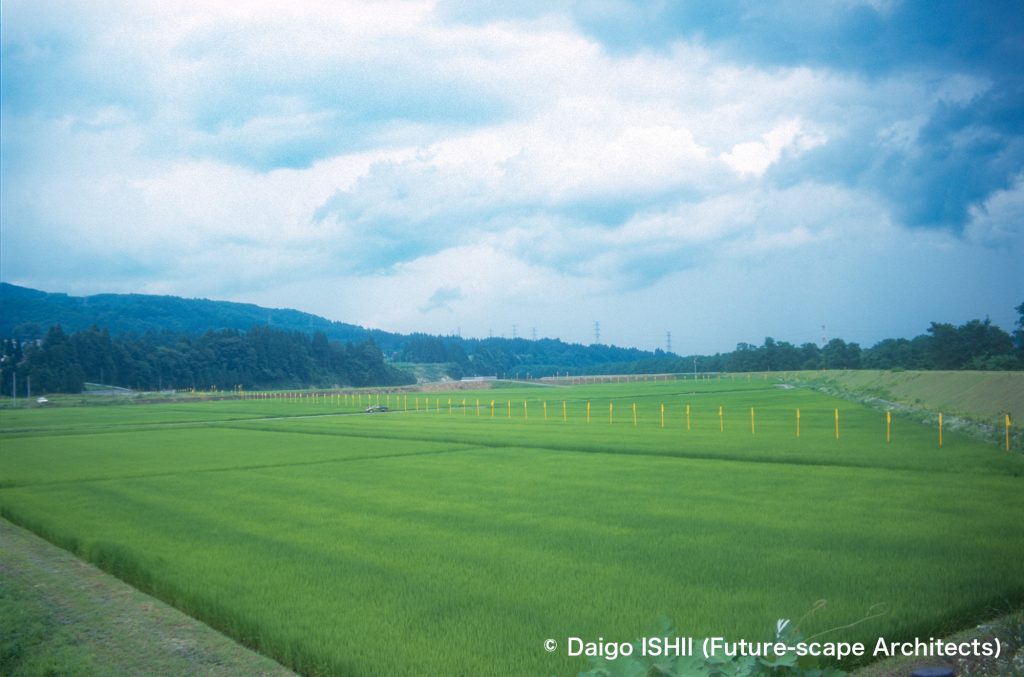
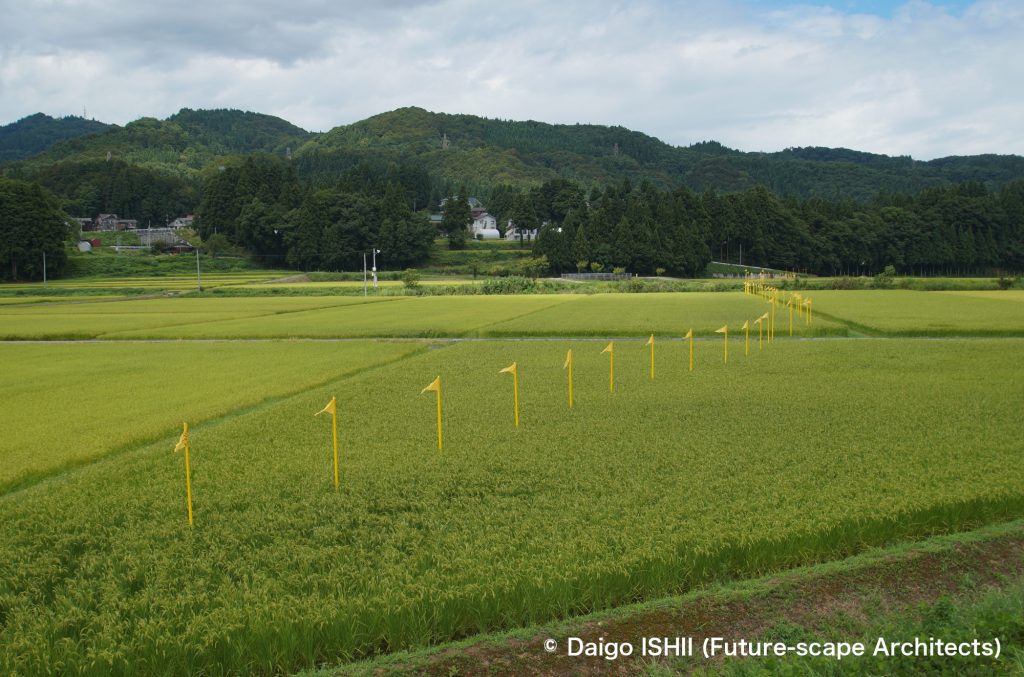
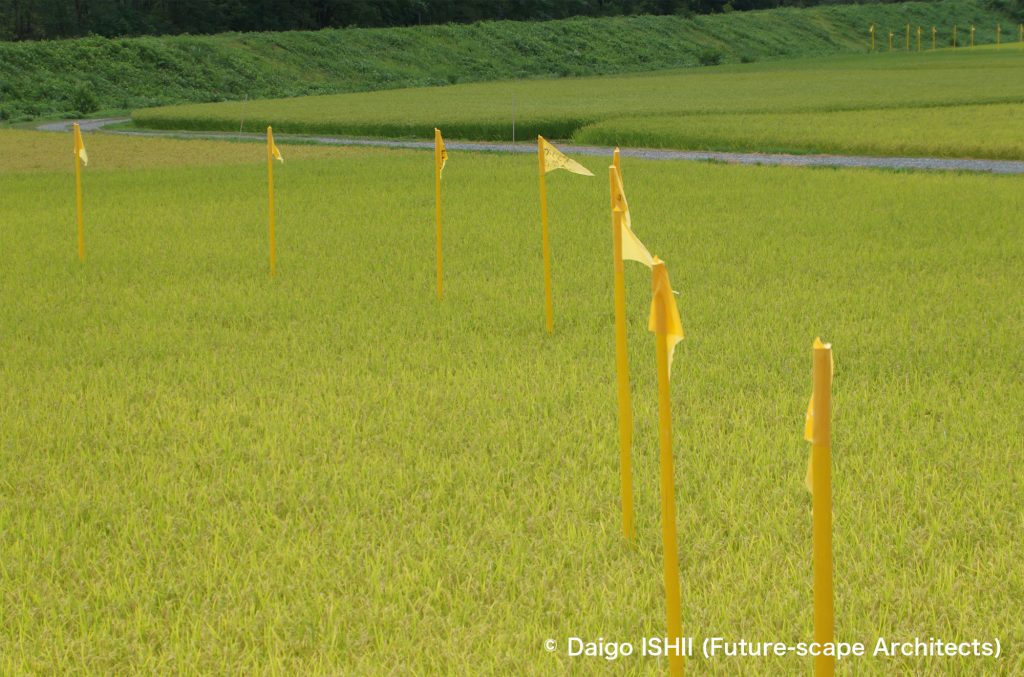
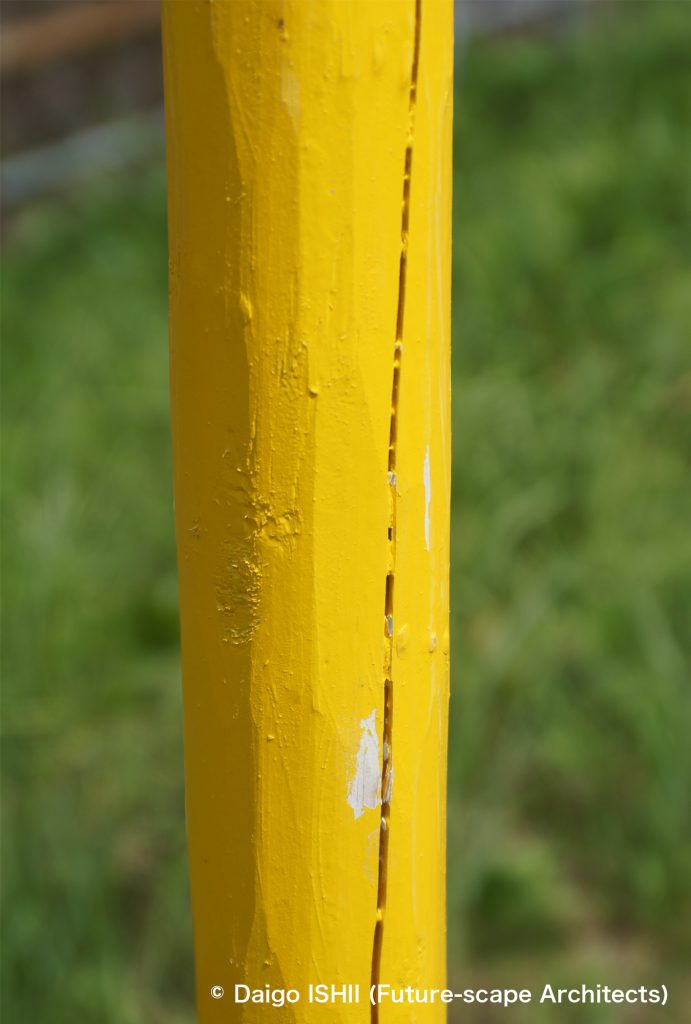
2018 Ma YANSONG / MAD Architects ”Tunnel of Light” (Now opening)
Kiyotsukyo Gorge, one of Japan's three major canyons, famous for its columnar joints, used to have a footpath along the gorge, but it was closed to traffic after a collapse in 1988. Instead, the current tunnel was opened in 1996. When MAD renovated the dreary 750-meter-long concrete tunnel as an artwork in 2018, it became the most popular spot at the Echigo-Tsumari Art Triennale.
English Website
https://maps.app.goo.gl/VjEVXQ11DCWaWxvM7
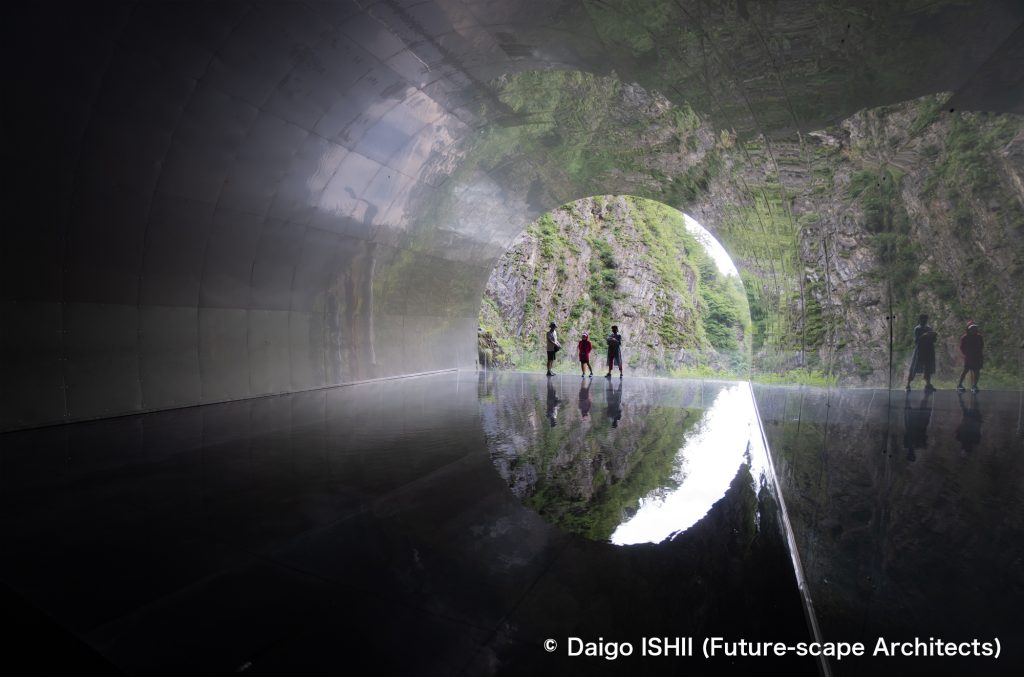
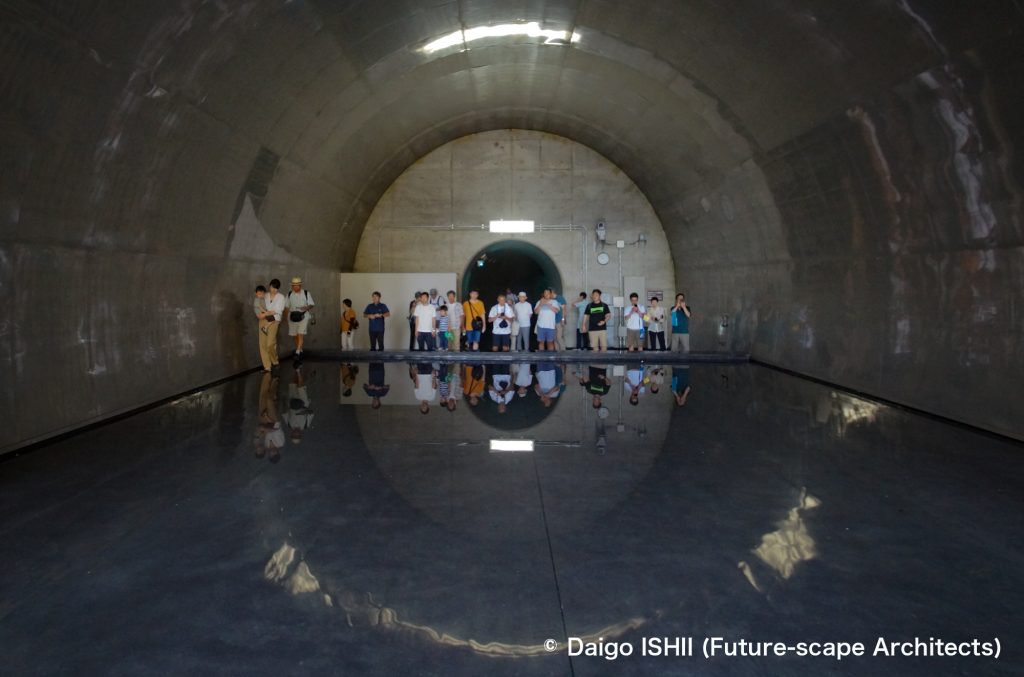
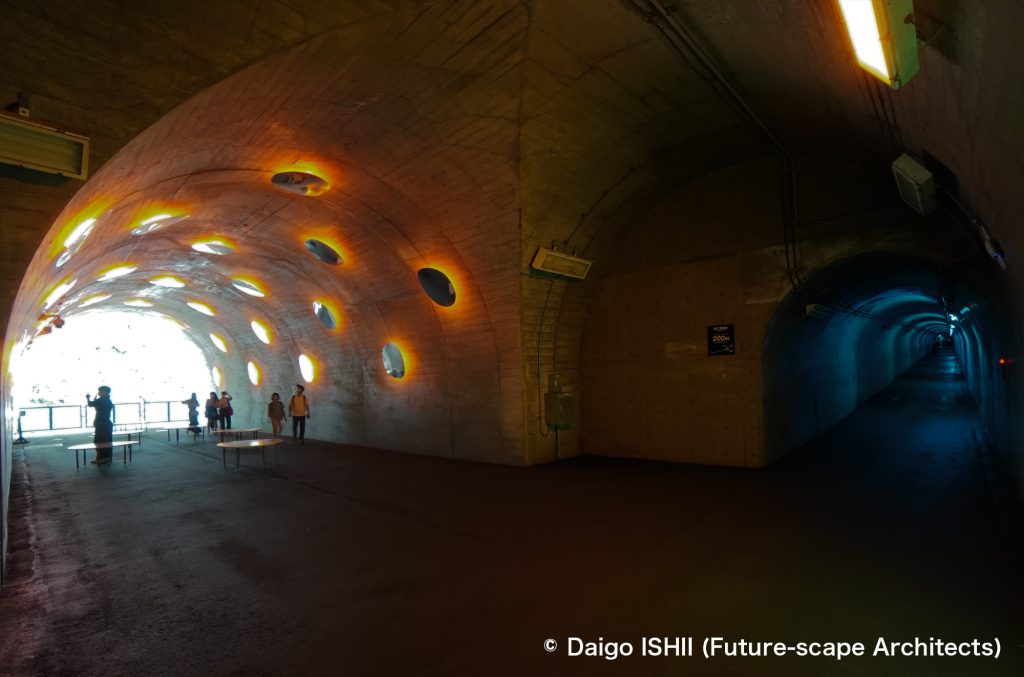
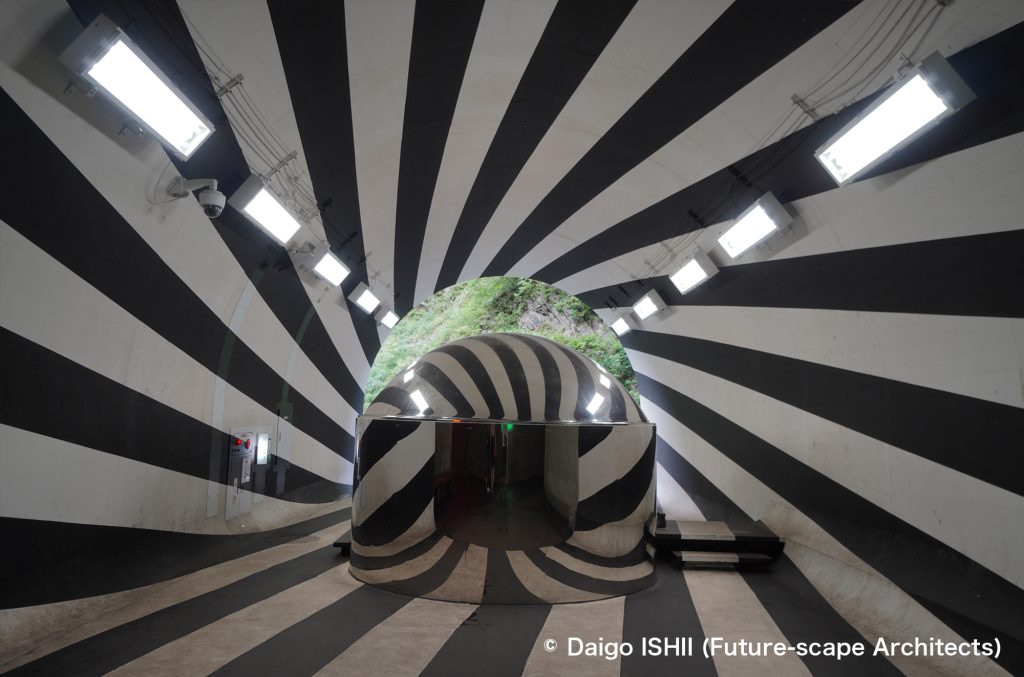
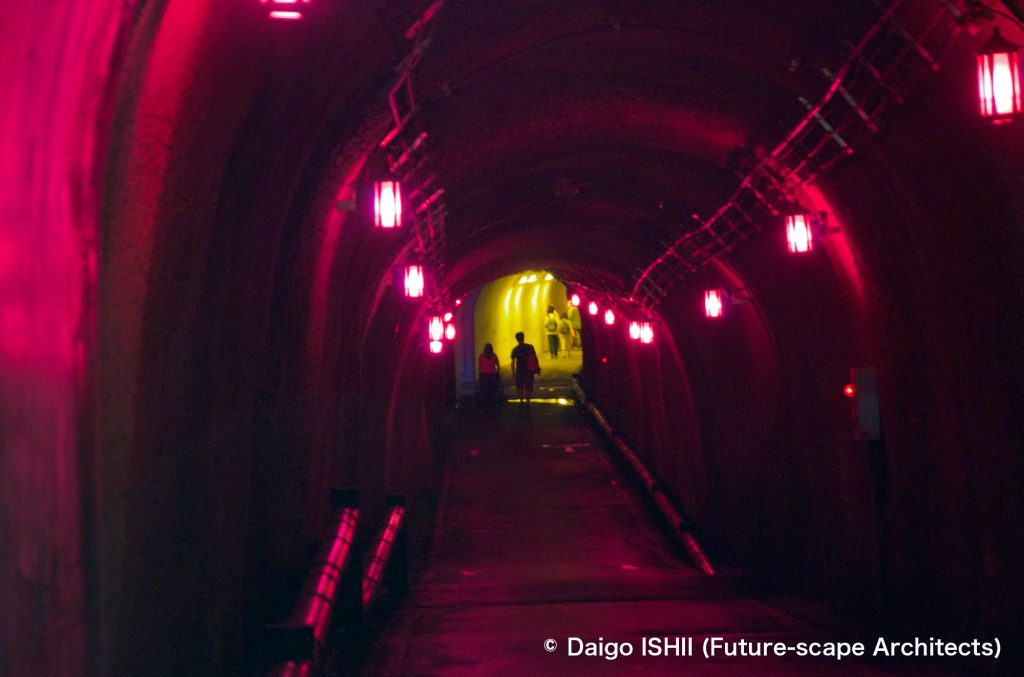
2015 Yukihisa ISOBE ”A Monument of mudslide” + Niigata Prefecture ”Toyazawa Erosion Control Dam" (The artwork is no longer in existence, and only the erosion control dam can be viewed from below.)
Toyazawa erosion control dam was completed on the site of the debris flow caused by the Northern Nagano Earthquake, and ISOBE marked the area of the debris flow with 230 yellow flags on the site of dam and its surroundings. To promote awareness of the erosion control dam, Niigata prefecture asked Isobe to install an artwork at this location. The inside of the cell-type dam, made of weather-resistant steel plates, was filled with the soil that flowed out.
English Website
https://maps.app.goo.gl/kecjr3iFeqCNw6wD7
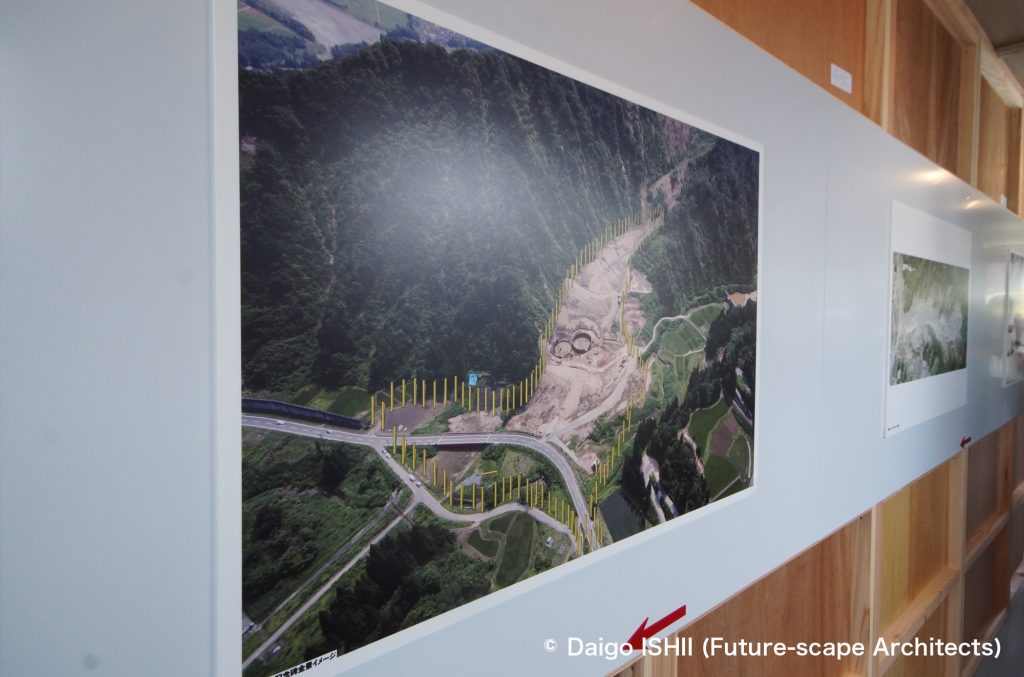
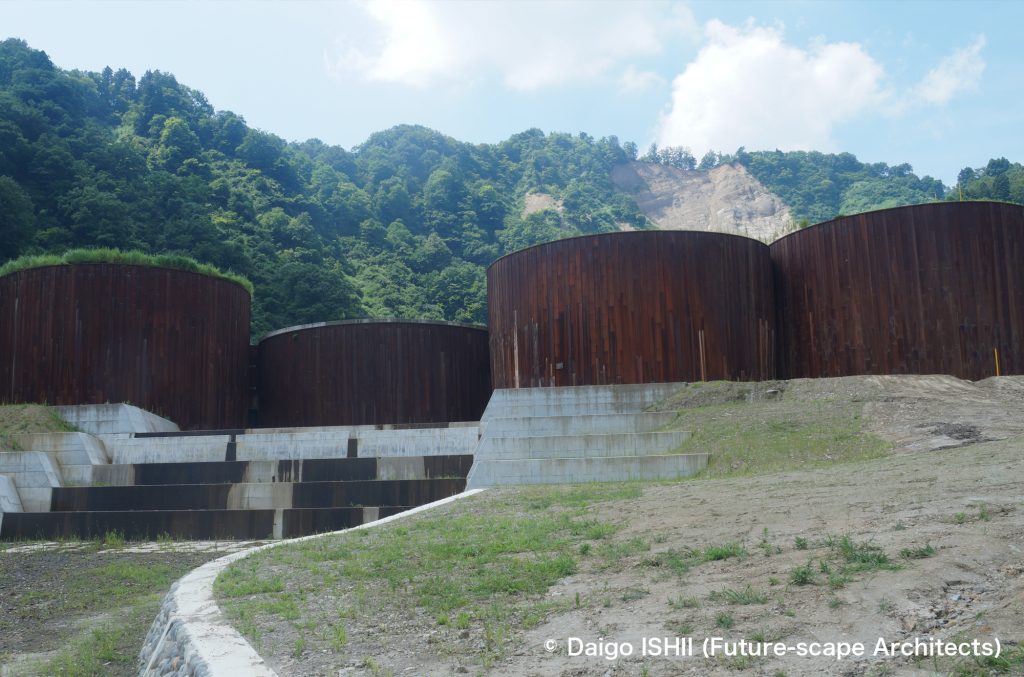
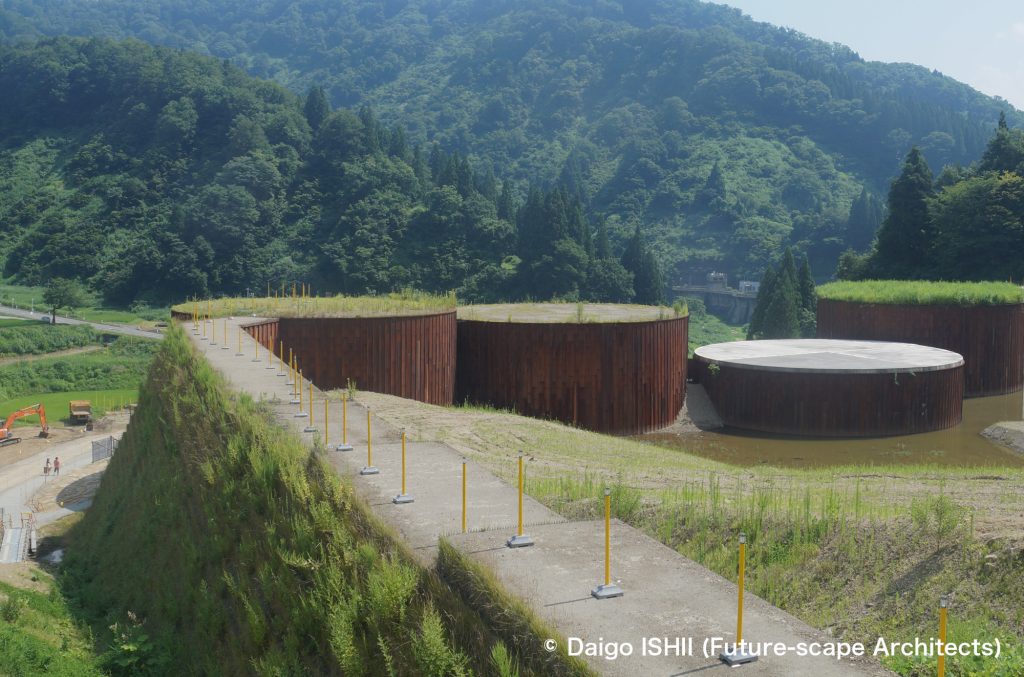
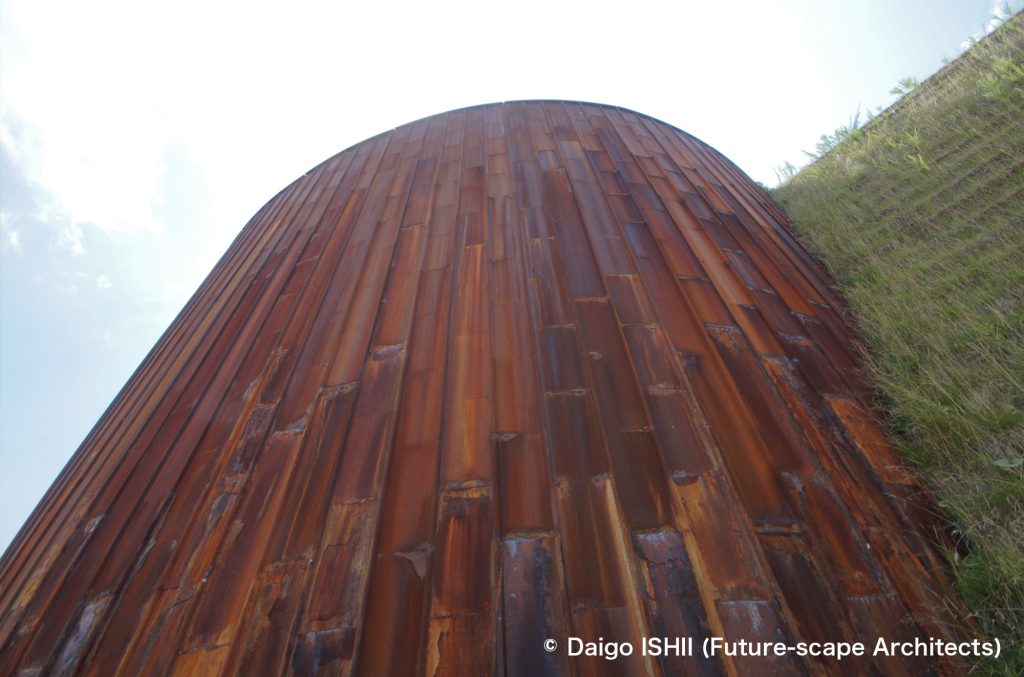
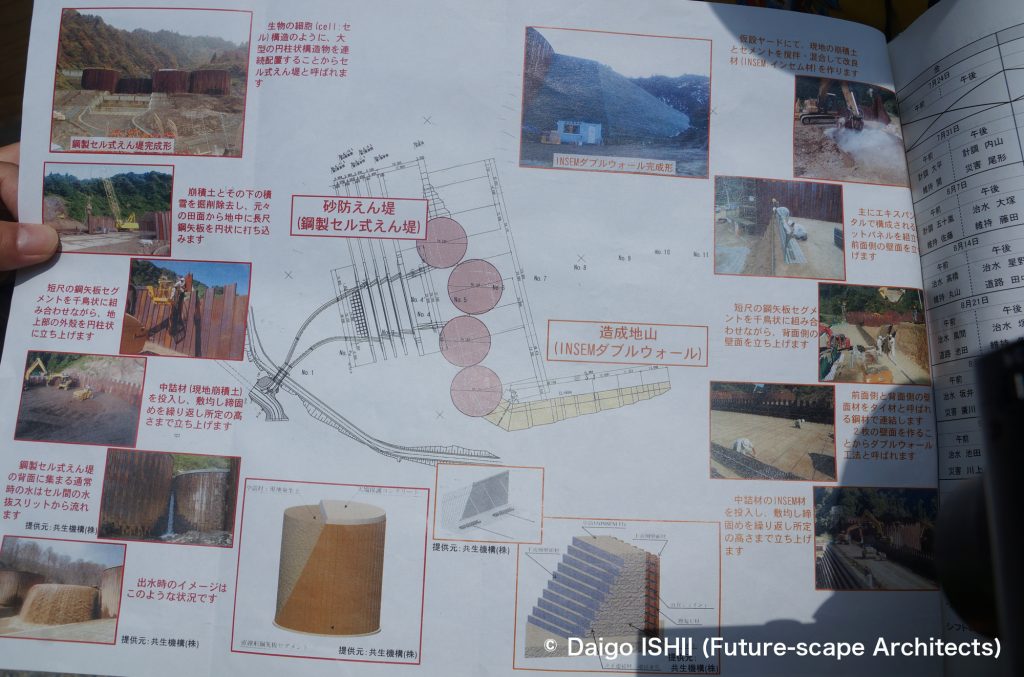
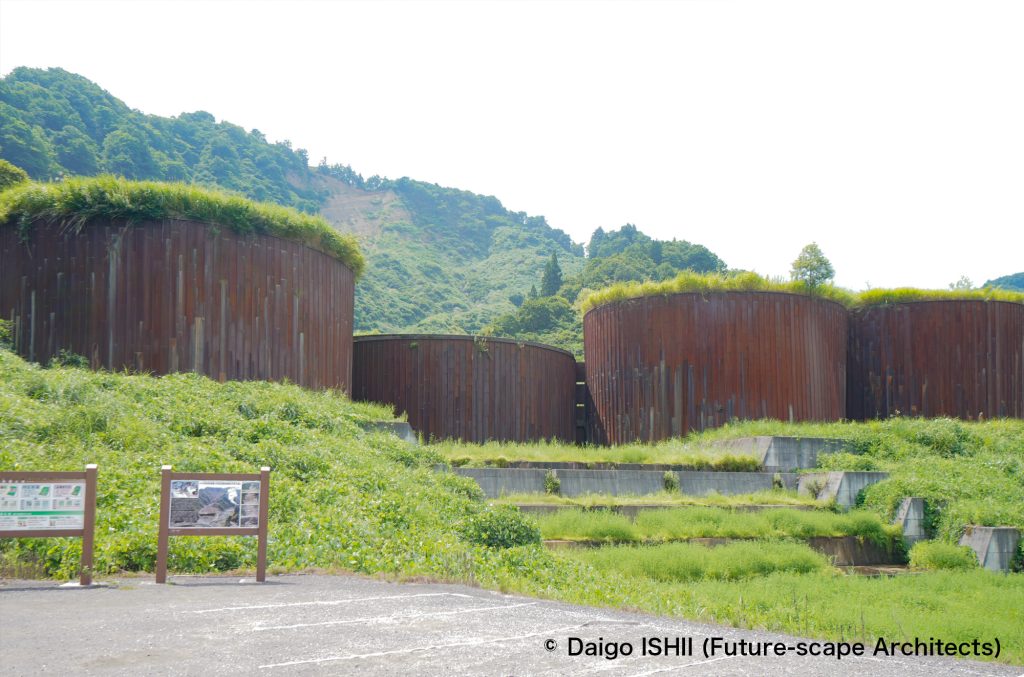
芸術祭でランドスケープをテーマにした作品
2000 Hossein VALAMANESH ”In Memory of Snow” (No longer in existence)
An installation work was set up in the beech forest of the "Hoshi-to-Mori-no-Uta Museum" in Tokamachi. A white ladder used for removing snow and a white house that looked like it was covered with snow floated in the forest. An unreal forest that ddid't seem like a real landscape appeared.
English Website
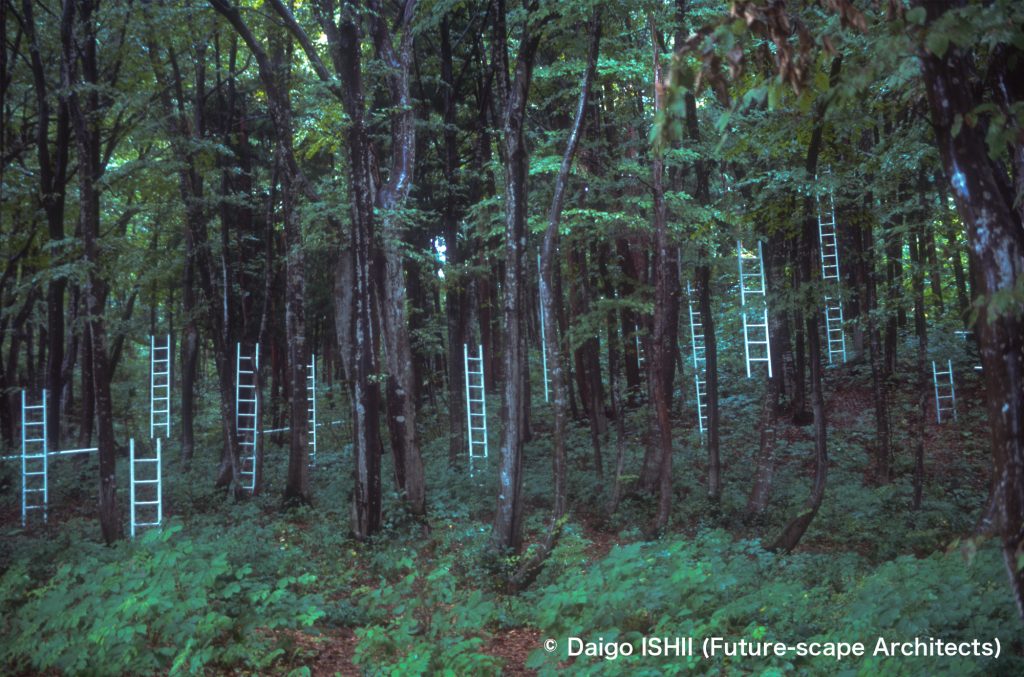
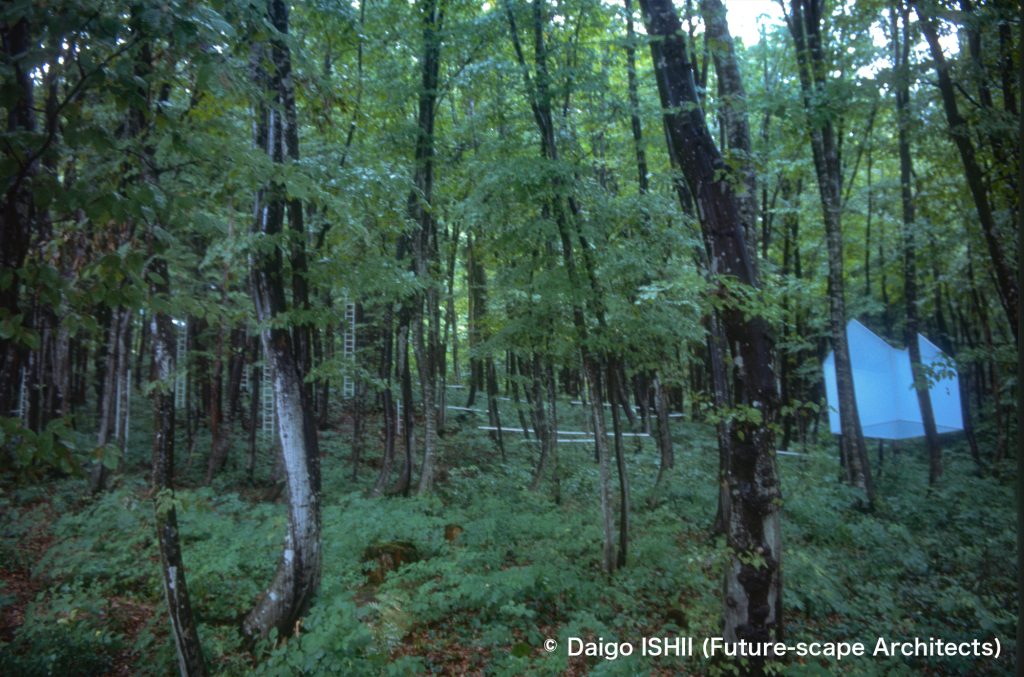
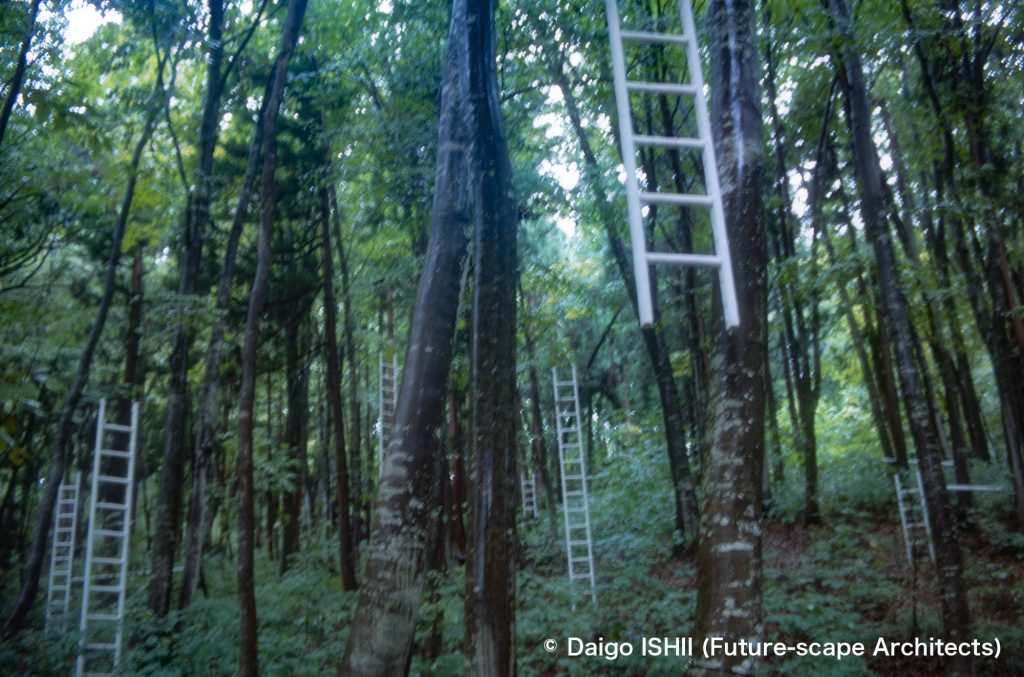
2000 Daniel BUREN ”La Musique,La Dance” (No longer in existence)
350 striped flags in three different colors were installed along a one kilometer of the arcade in downtown Tokamachi. When Buren's stripes were installed in Paris full of stone architecture, the difference made the town and the flags stand out, but in Japan's chaotic streetscape, they blend in with the town, highlighting the difference in the environment in which the flags were placed. This artwork regarded the entire downtown as a landscape.
English Website
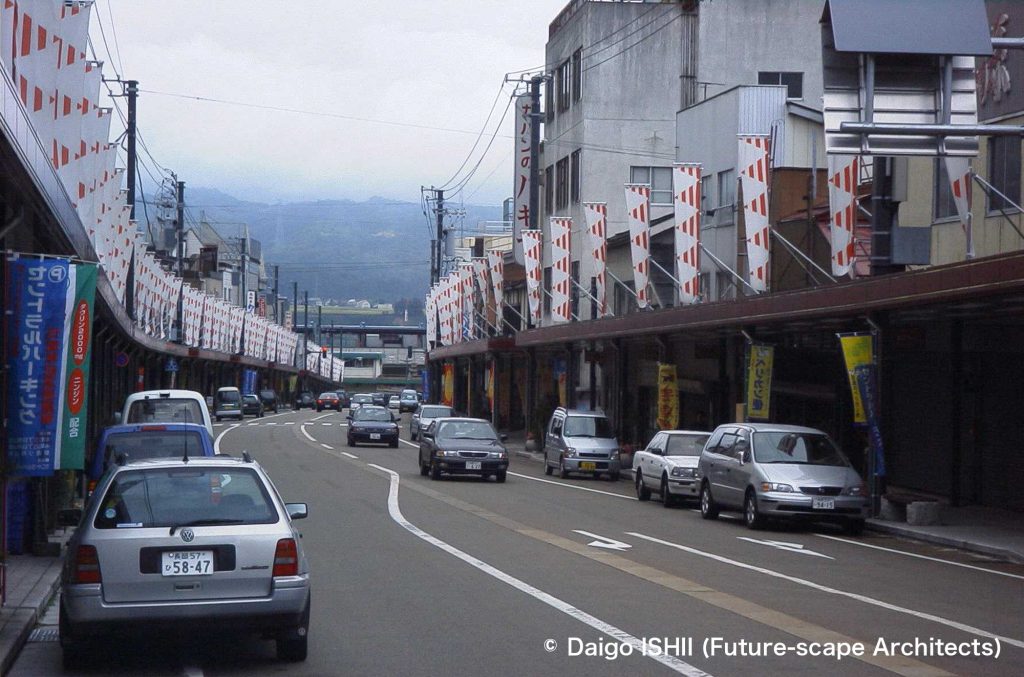
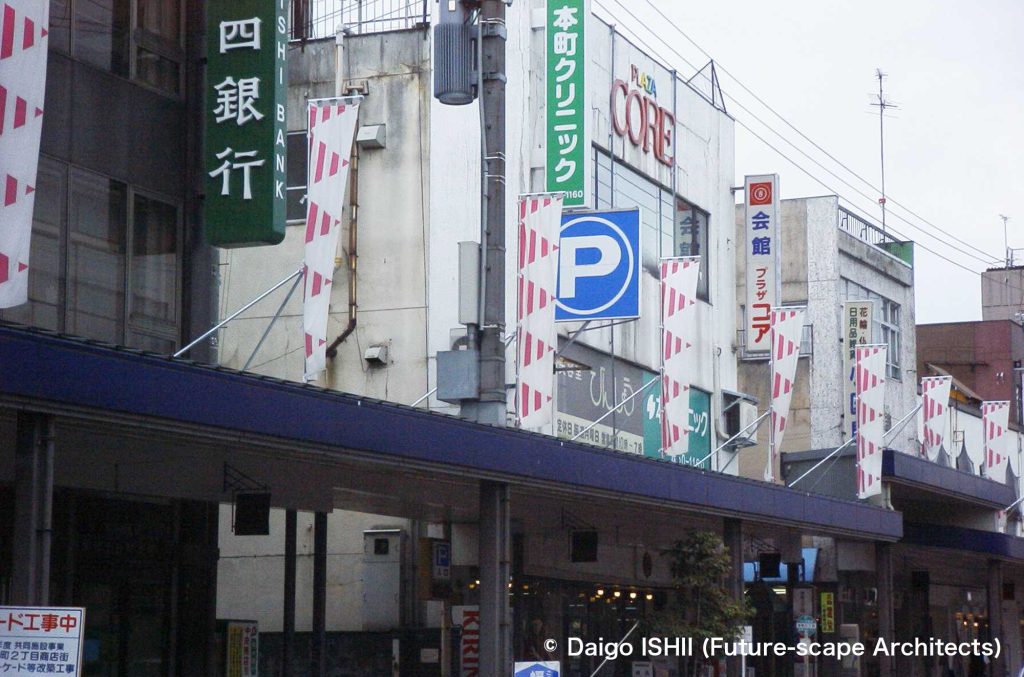
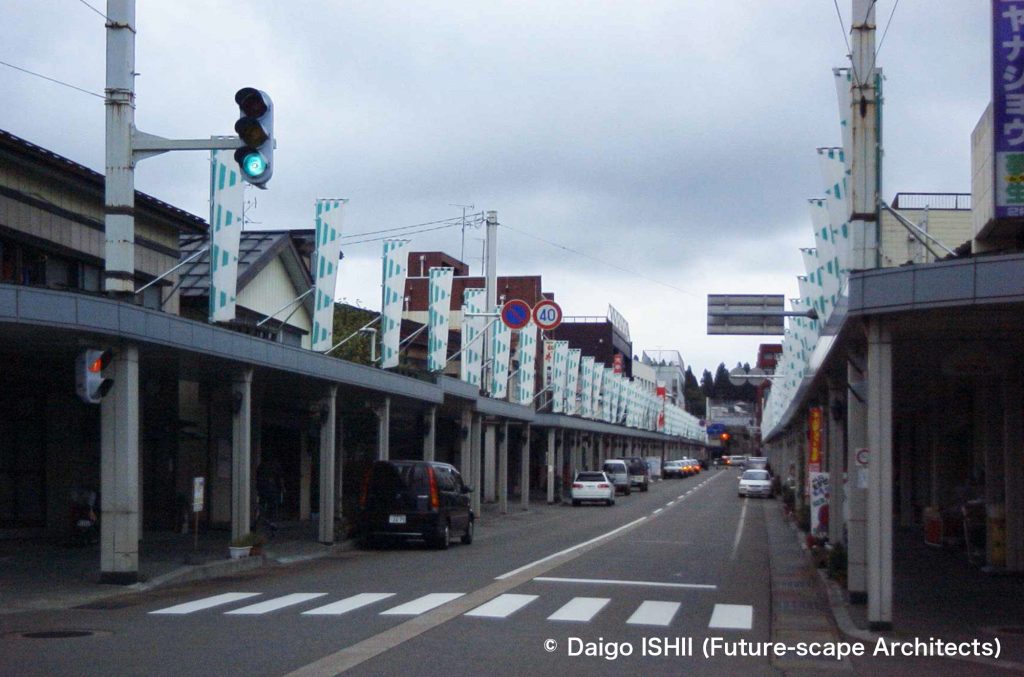
2000 Takuro OSAKA ”LUNAR PROJECT-Capture the Moonlight” (No longer in existence)
The mirrors installed in the rice terraces of Amamizugoe district reflected the moon, recreating the "Tagoto no Tsuki (Moons on each rice terrace)." The mirrors were adjusted to match the height of the moon. I went to see it once at night, but because it was cloudy, I couldn't actually see the moon reflected.
English Website
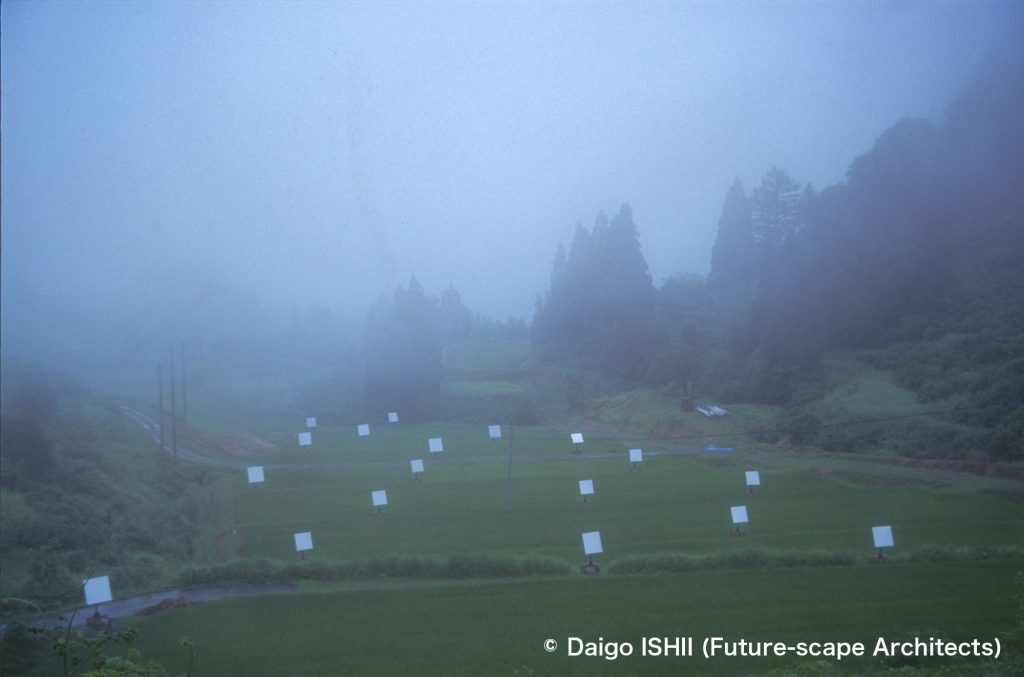
2000 Esther ALBARDANE ”Giant Gardener” (Now opening except winter)
A giant gardener is buried in the forest at the Fushiguro Castle Ruins Campgrounds in Kawanishi. His fingers and feet appear here and there throughout the forest.
English Website
https://maps.app.goo.gl/L9vtCtwQDqQAczEB9
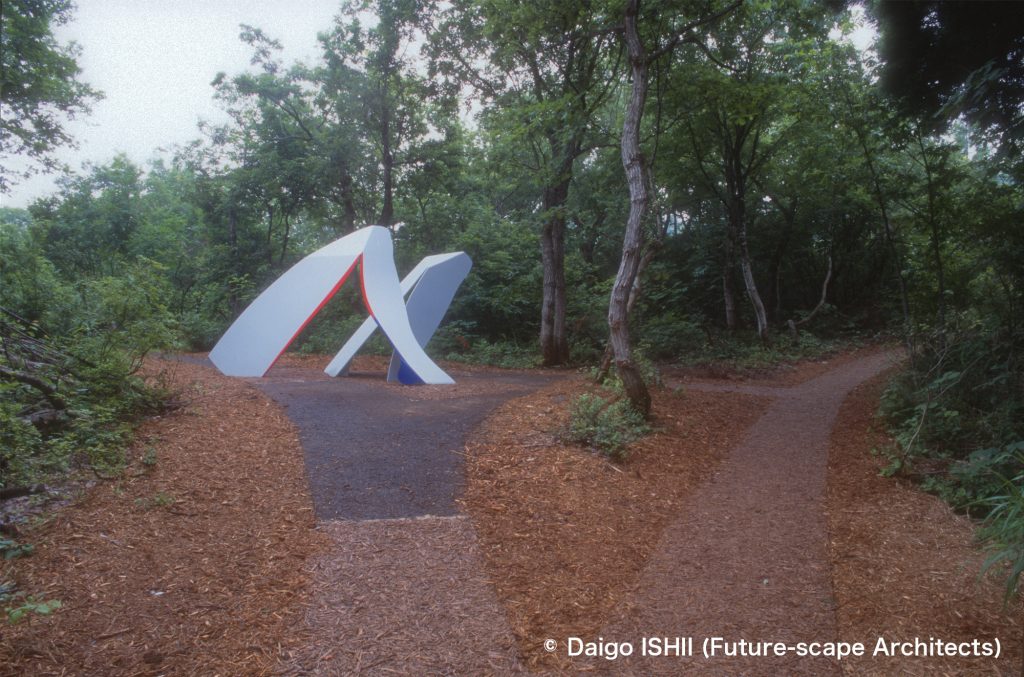
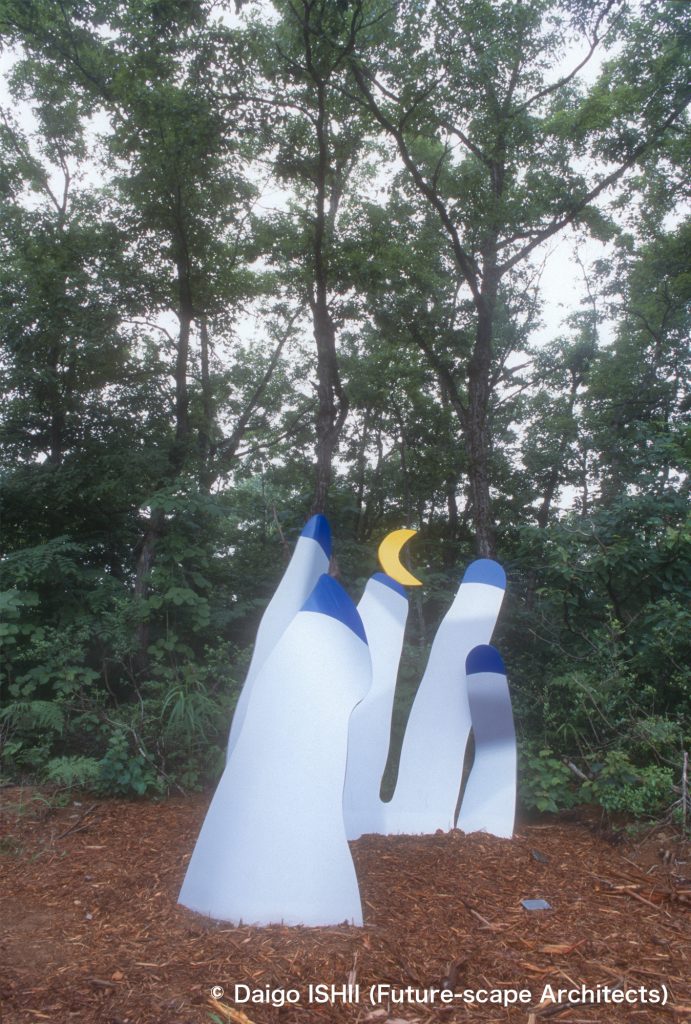
2003 R & Sie sarl d' Architecture ”Asphalt Spot” (Now opening except winter)
A parking lot was built at the foot of Tsumari Ohashi Bridge over the Shinano River. The parking lot has been transformed to become part of the landscape, with toilets and a sunshade area underneath the rising terrain.
English Website
https://maps.app.goo.gl/3UAjJHWcjLgd3aeA7
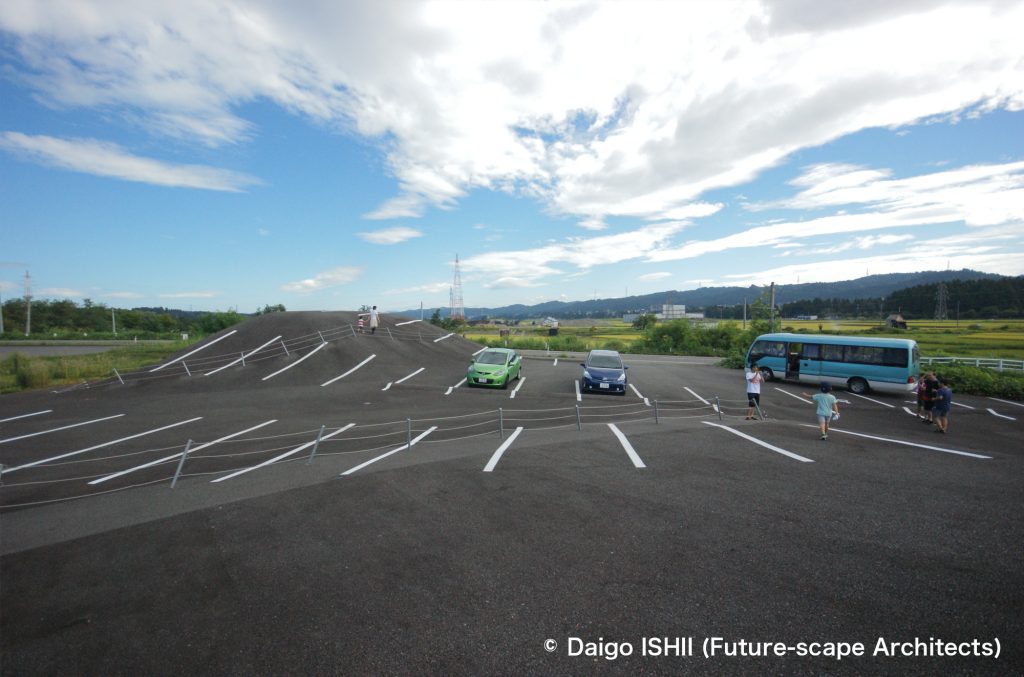

2003 Ritsuko TAHO ”Green Villa” (Now opening except winter)
This artwork depicts the five words "Fire, Water, Agriculture, Art, and Deity" in hieroglyphics on the landscape of Nakago Green Park. It symbolizes the agricultural scenery and Jomon ruins in the region. It is a wonderful piece of landscape art that is well maintained, but unfortunately it is located at the back of Nakago Green Park and so few people visit.
English Website
https://maps.app.goo.gl/ZCJ2m14dMtG1kGoE9
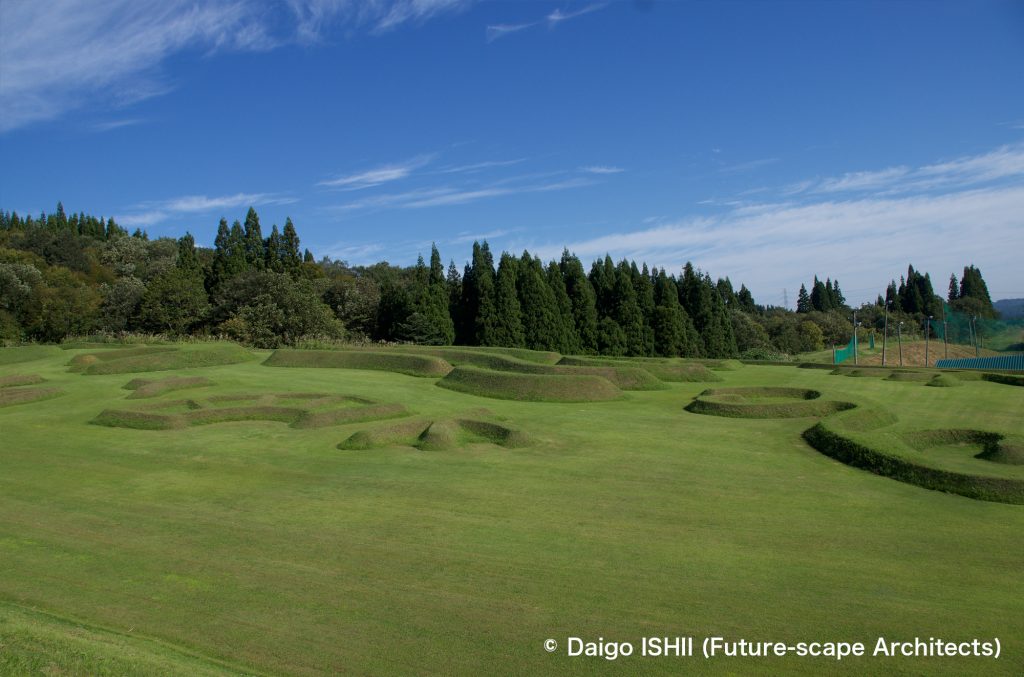
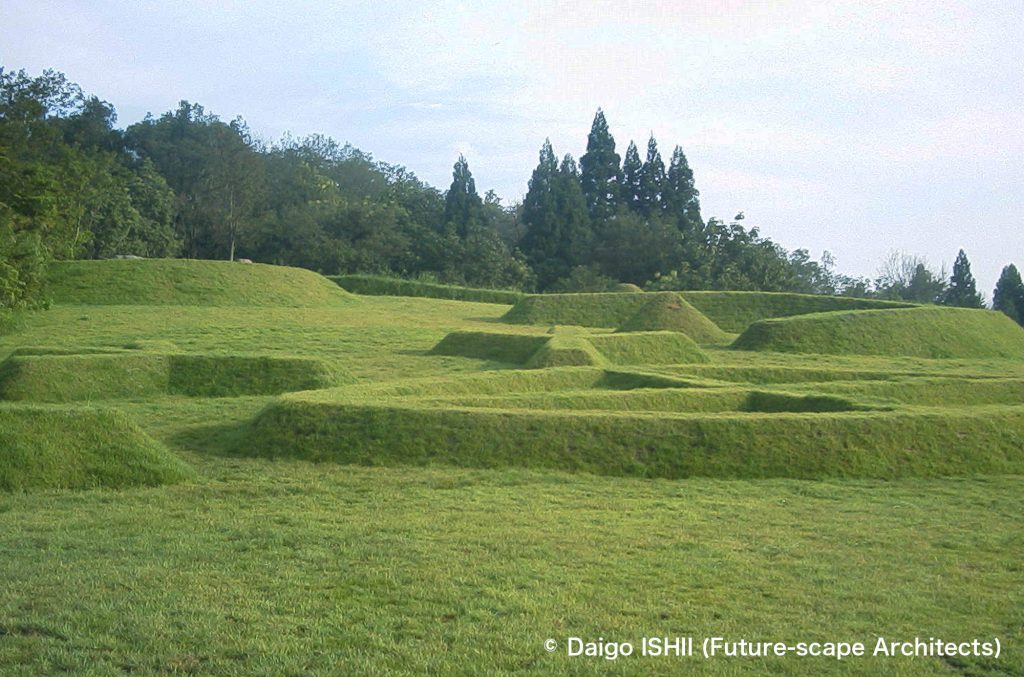
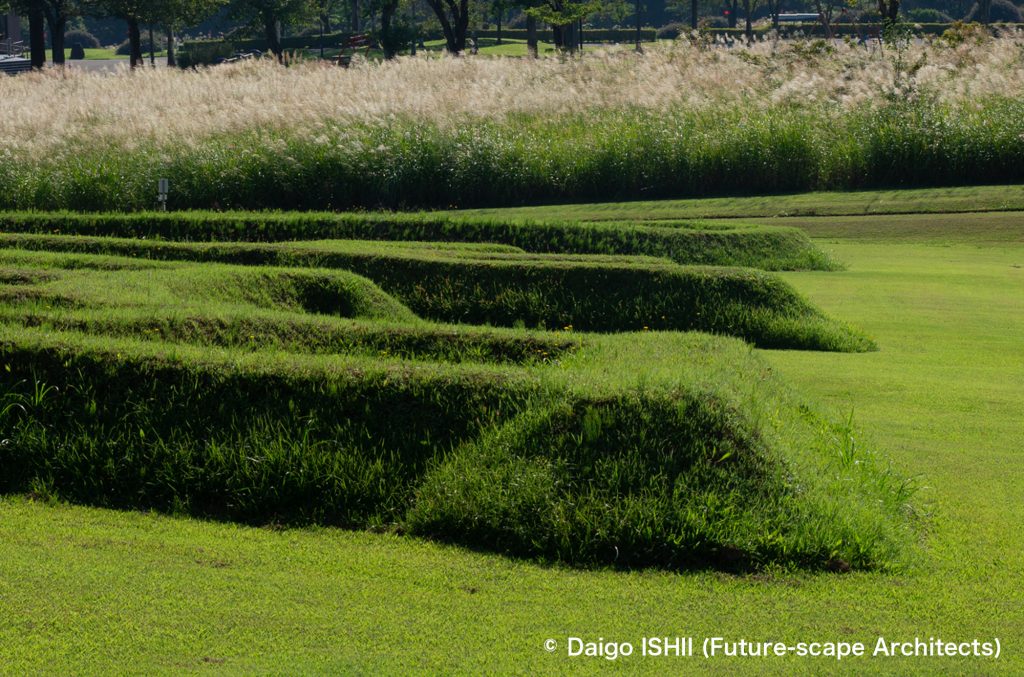
2003 Kazunari NITTA ”White Project” (No longer in existence)
12,215 pieces of white cloth collected through the collaboration of the supporter of the festival, local residents, and local children created another landscape on the landscape of Nakago Green Park. The connections of the cloth sewn into 20 cm squares represent the connections between people and the world.
English Website
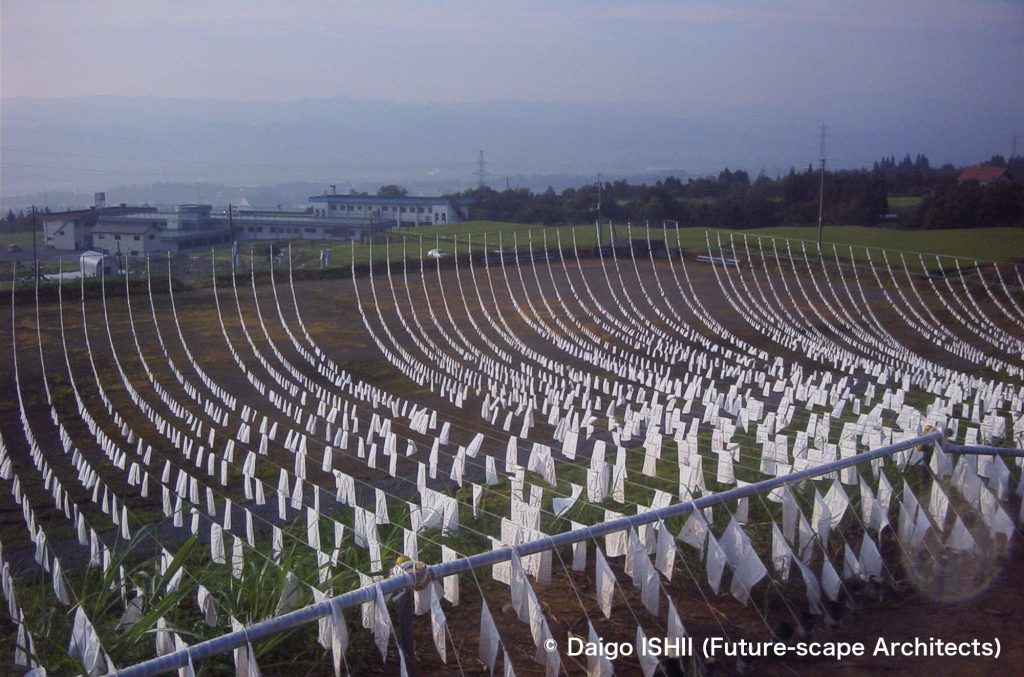
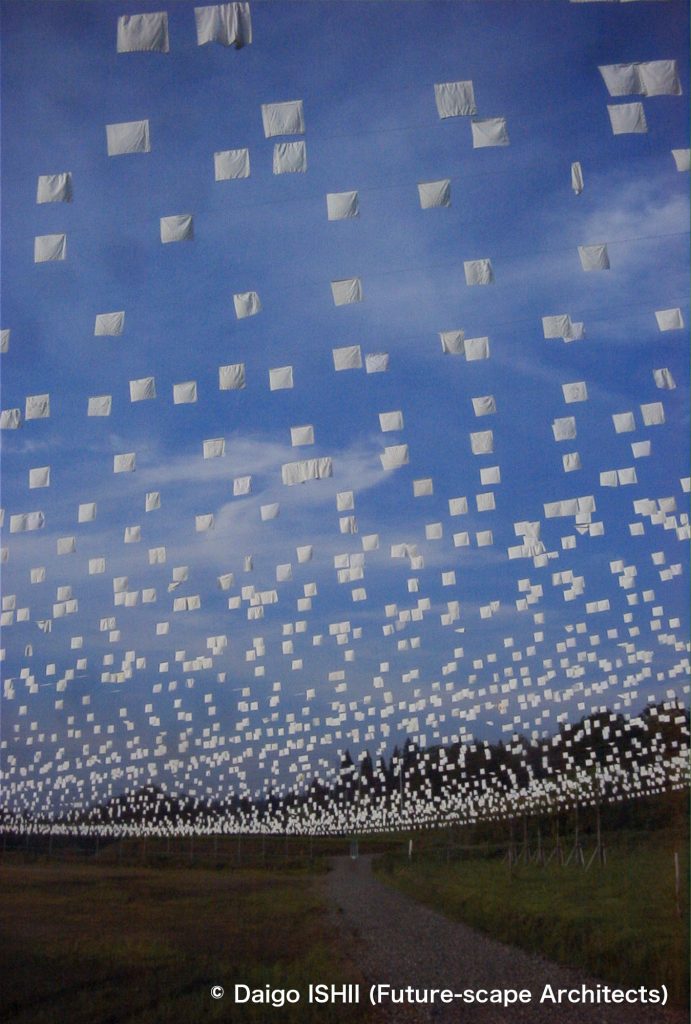
2003 Architectural Office Casagrande & Rintala ”POTEMKIN” (Now opening except winter)
This artwork was created on the riverbank in the Kuramata community. The site was originally a garbage dump-like place, but was transformed into a cozy landscape space like a park. Thick weatherproof steel sheets separate the area from the surrounding area while also connecting it exquisitely. In honor of the Battleship Potemkin Mutiny, one of the ignition points in the Russian Revolution, the artist considered this place as a turning point for finding the relationship between humans and nature.
English Website
https://maps.app.goo.gl/kL7m5SEsVGEY6nzY6
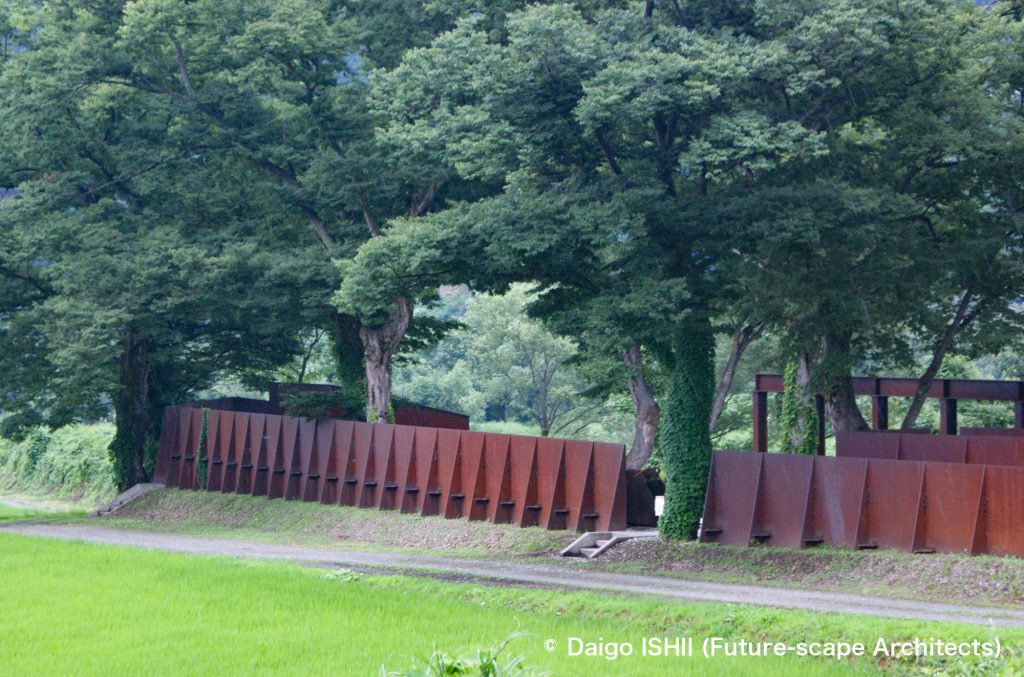
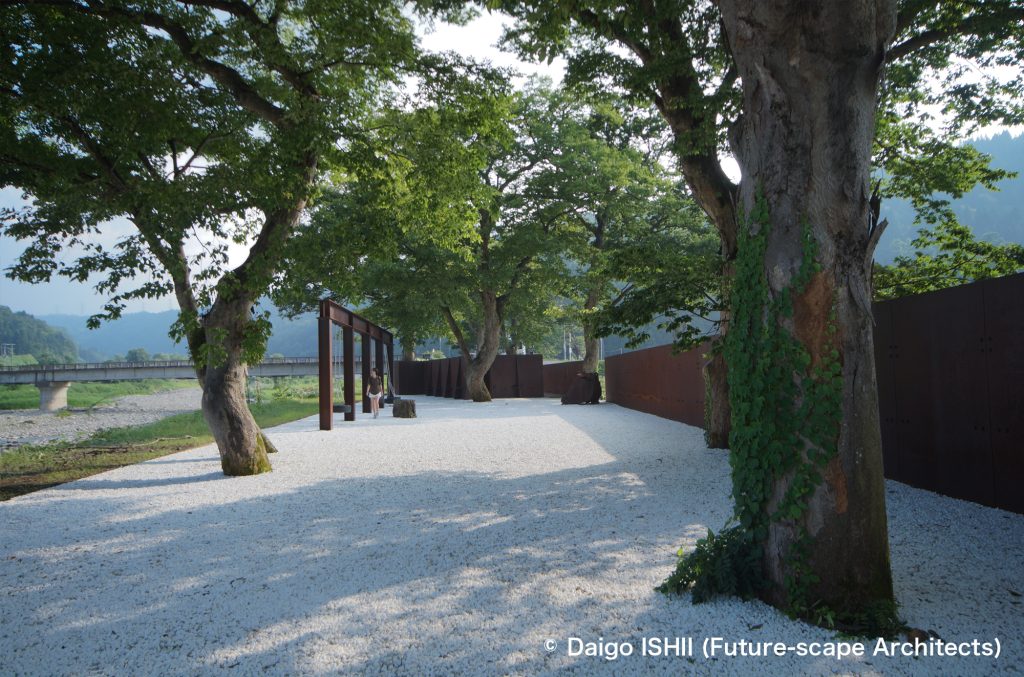
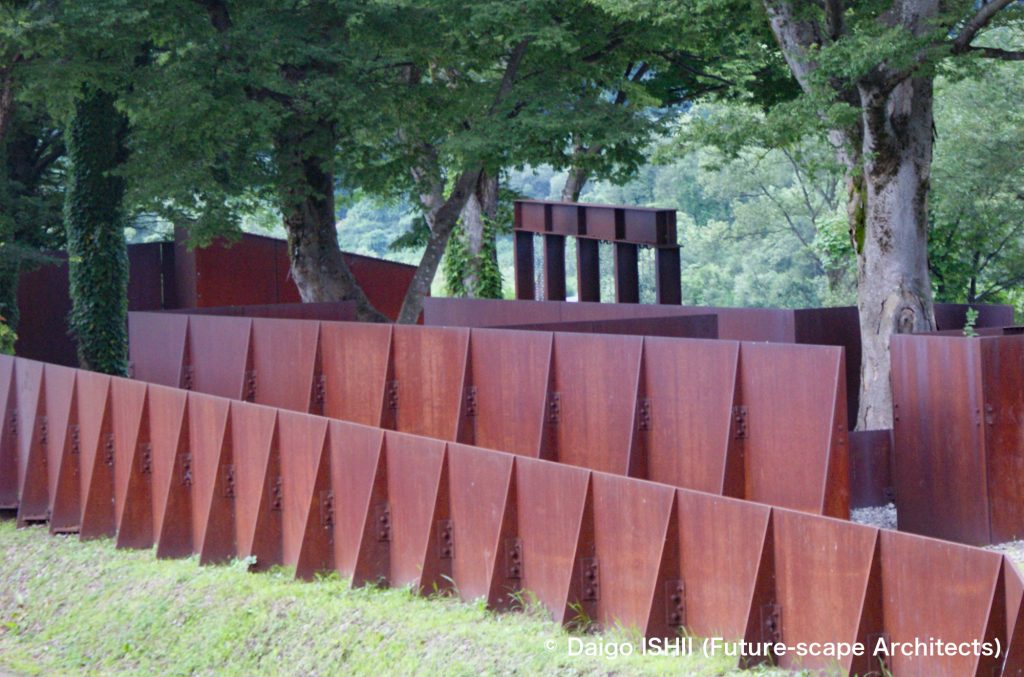

2006 Dominique PERRAULT ”Pavillon / Papillon” (Now opening except winter)
This pavilion with the function of a Noh play stage was built in Shinmei Waterfront Park in Tokamachi. The underside of the complicated roof is finished with a mirror material, restructuring various scenery from the surrounding area. In winter, the roof folds vertically to withstand heavy snowfall.
日本語ウェブサイト
English Website
https://maps.app.goo.gl/GxrpbcACrBzrGsx5A
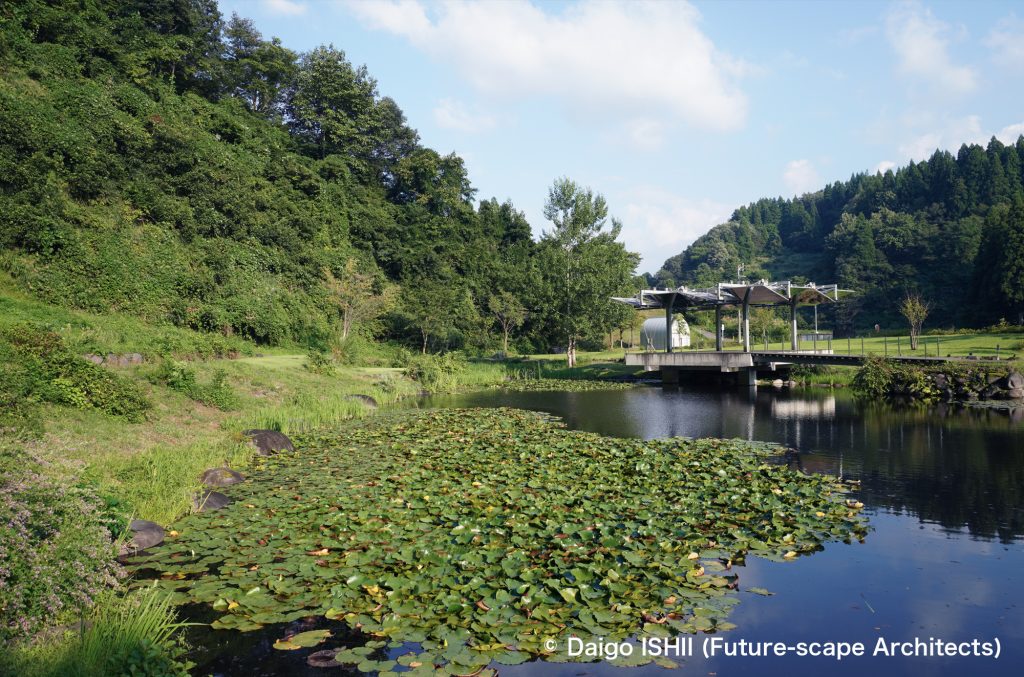
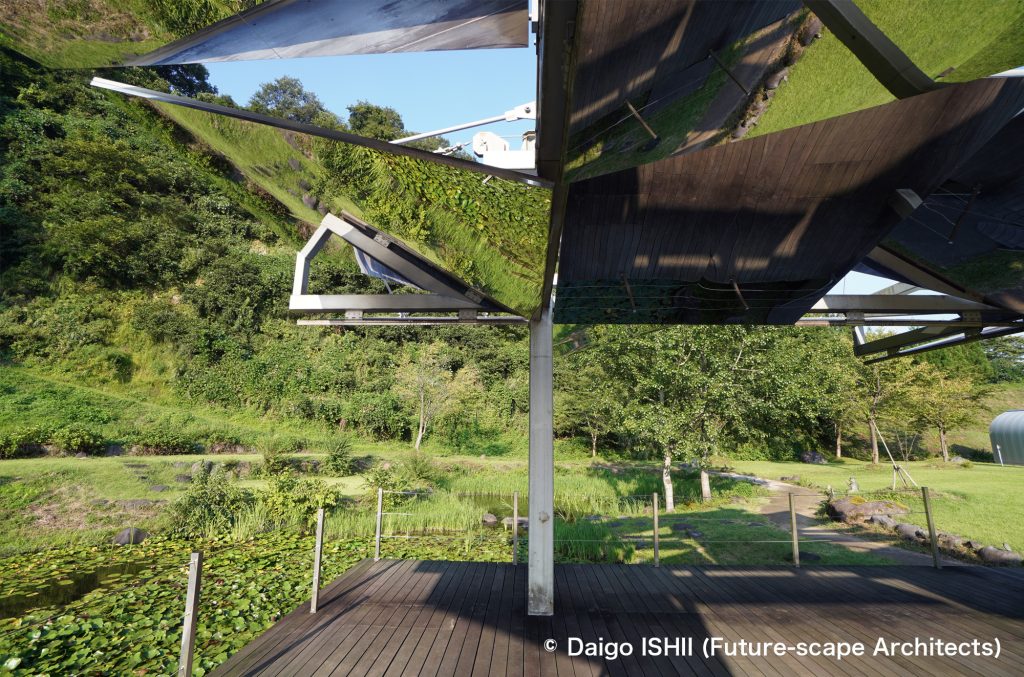

2006 Yoshiaki KAIHATSU ”Kamaboko FACE” (Now opening)
Kamaboko is the name of Japanese traditional boiled fish paste food with peculiar form. The garages common in Tsumari are similar to it. They are resistant to heavy snowfall because snow slides off easily, and because their foundations are simple, they are not considered fixed assets and do not incur taxes. That is why so many of them were adopted in the region. As they do not have a positive presence in Tsumari's landscape, they tend to be treated as supporting characters and invisible. Kaihatsu painted the kamaboko-shaped garages scattered throughout the Tobitari community to resemble human faces, bringing to light the hidden landscape structure of the Tsumari villages.
English Website
https://maps.app.goo.gl/73Yp9FMNMEfsdvrj9
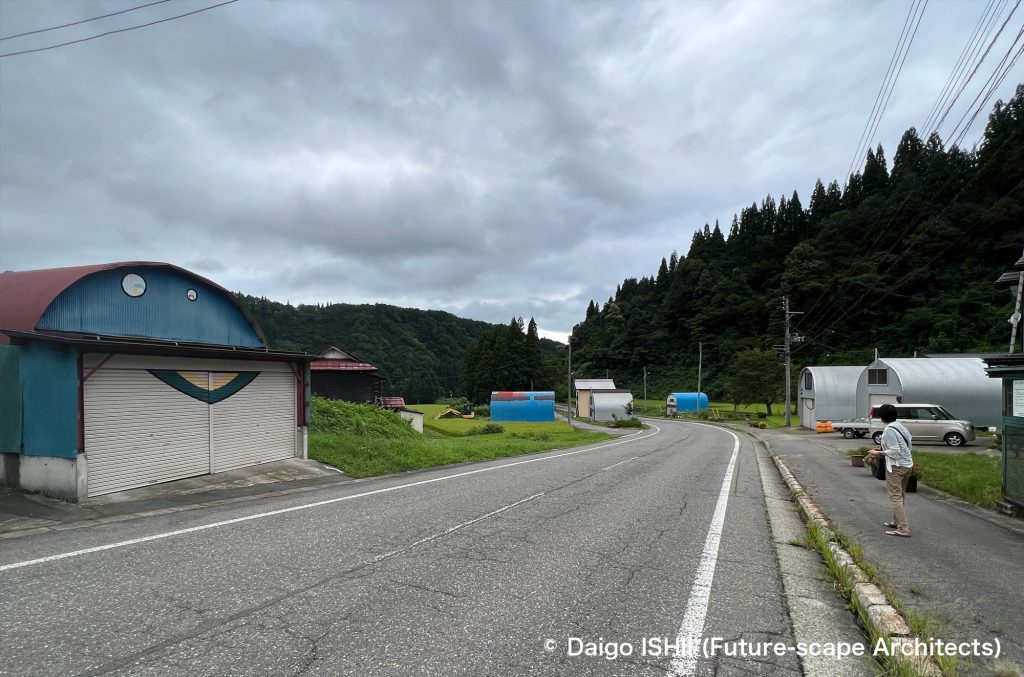
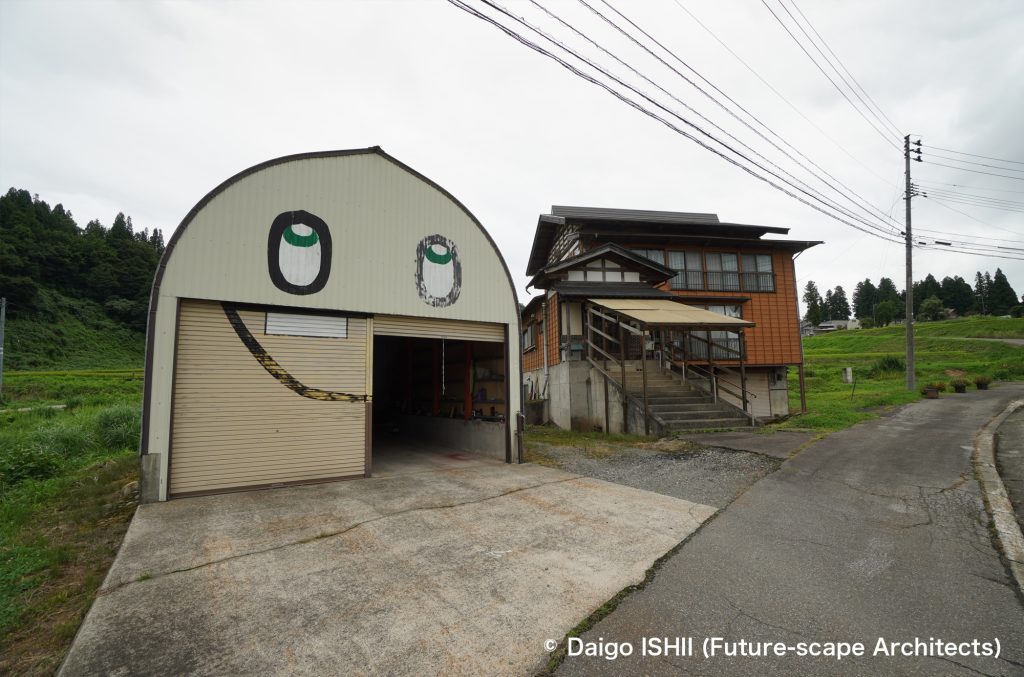
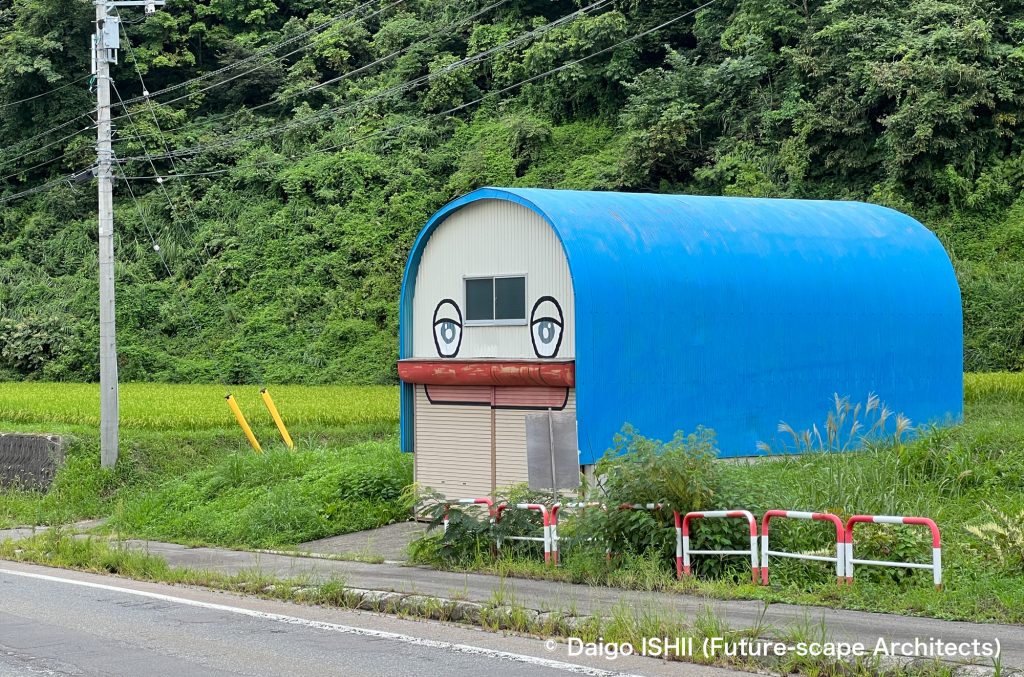
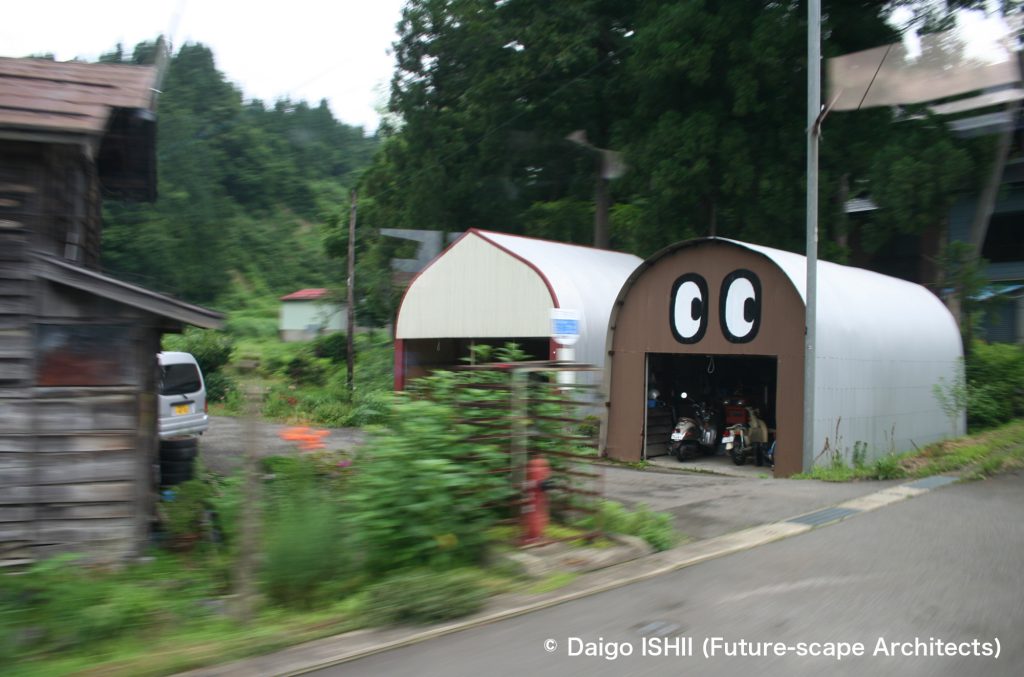
2006 Yoshiaki ITO ”Tour de Tsumari” (Held regularly)
This cycling event covers the entire Tsumari area. Participants can enjoy Tsumari's landscapes on a course that covers up to 120 km and has an elevation difference of 2,000 meters, weaving through the arts, villages, mountains, rivers, and rice fields. The event is held even outside of the festival years. On the event date in the festival year, according to many participants, the accommodations in Tsumari are fully booked.
English Website
Event Website
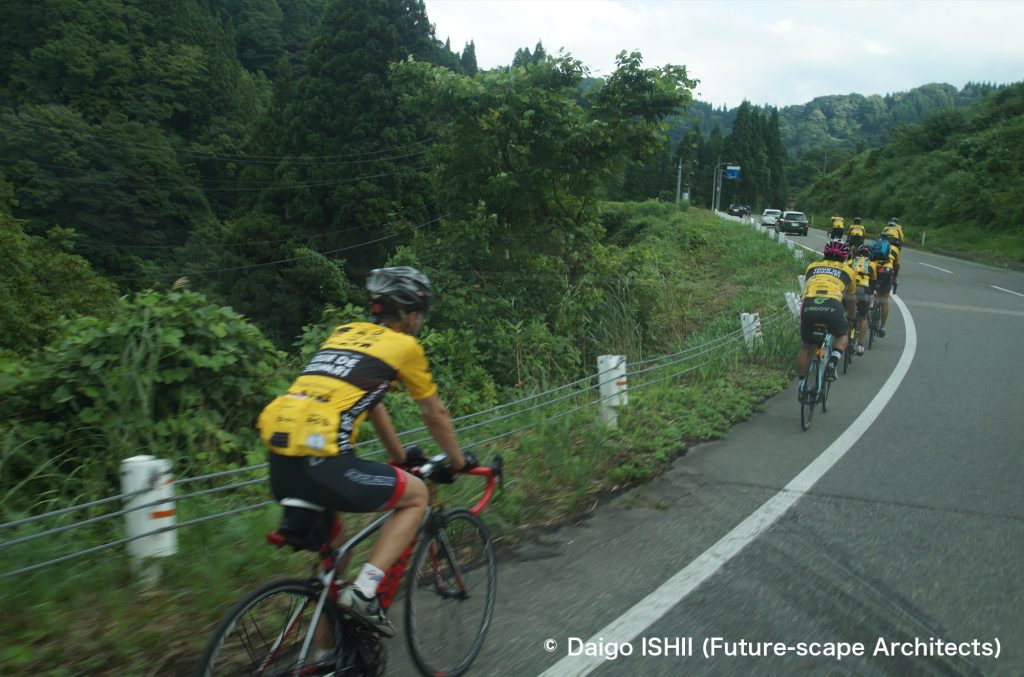
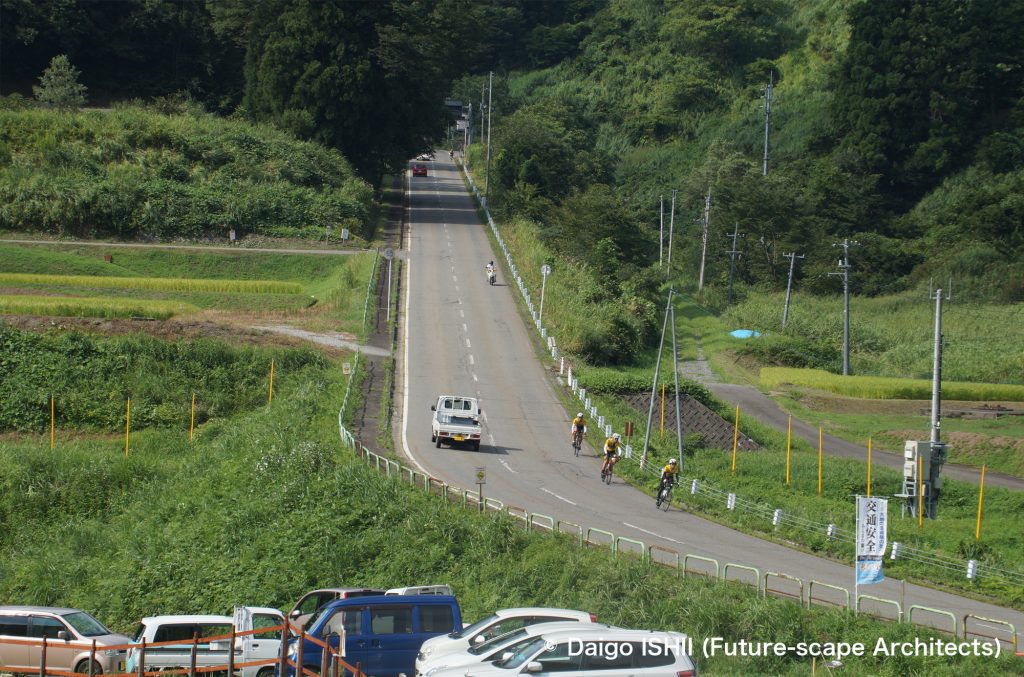
2009 Michio HORIKAWA ”Sky Catcher09” (Now opening except winter)
This artwork is installed at a campsite on the Daigonji Plateau in Matsunoyama. Mirrors are placed among the trees, reflecting the sky.
English Website
https://maps.app.goo.gl/9TwtgW1VcvxrTMSQA
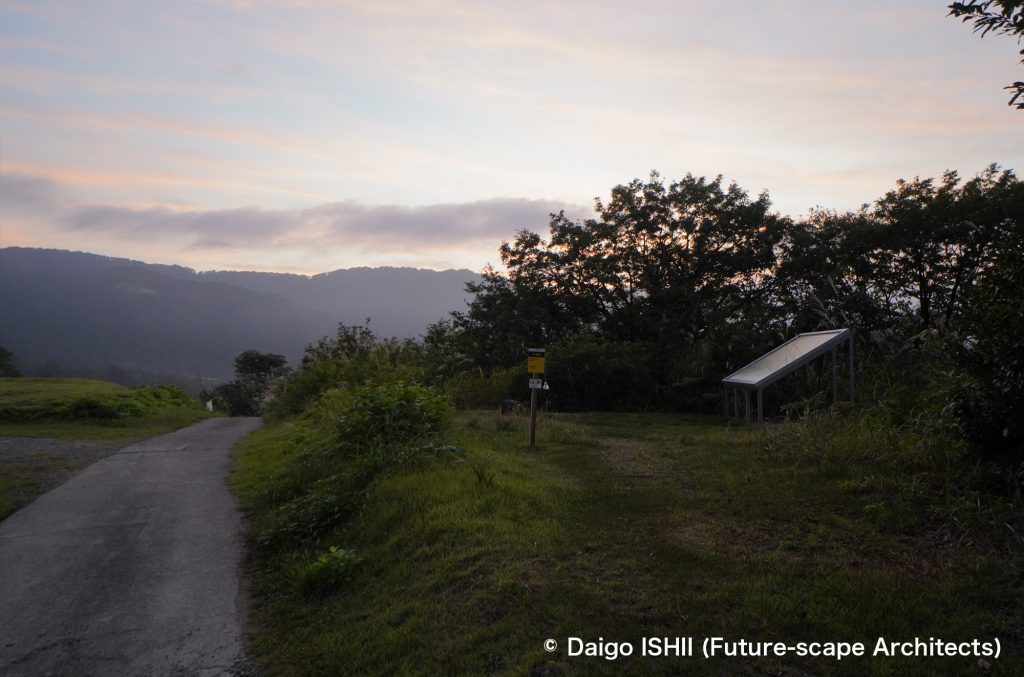
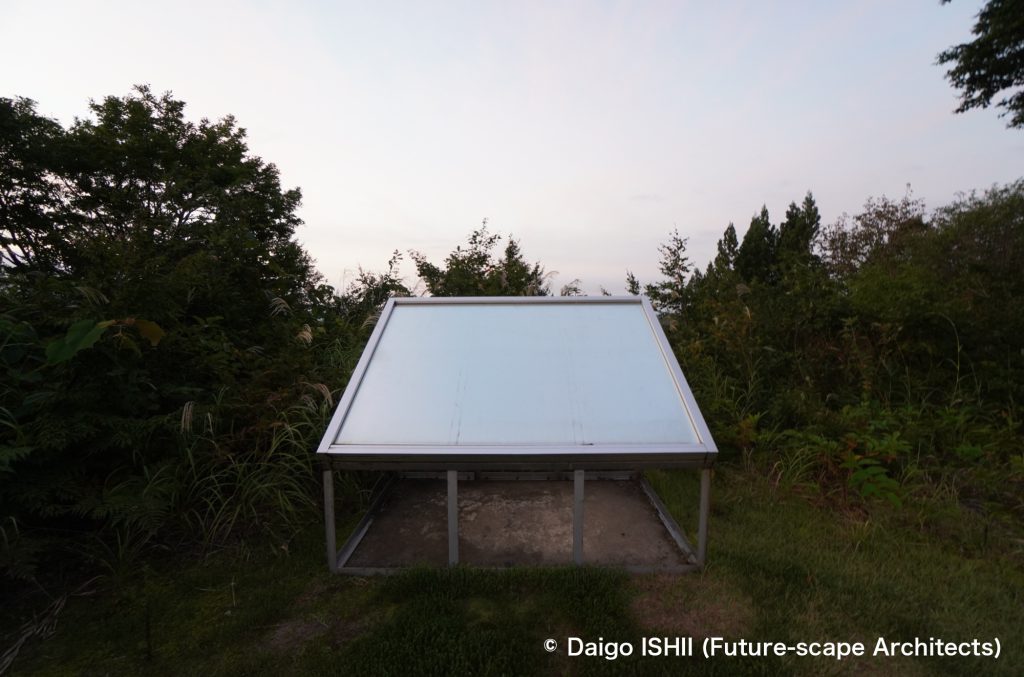
2018 Dadang CHRISTANTO ”Cakra Kul-Kul at Tsumari” (Opening during the art festival)
This artwork was installed in the rice fields of Seidayama district. The folk crafts that are installed in rice fields during the harvest season in Bali were installed in Tsumari, where one of the main industry is also agriculture, linking the agriculture of the two regions. The sound of the cakra Kul-Kul made by the wind creates a sense in the quiet agricultural area.
English Website
https://maps.app.goo.gl/mMChZJLxp6exb6aVA
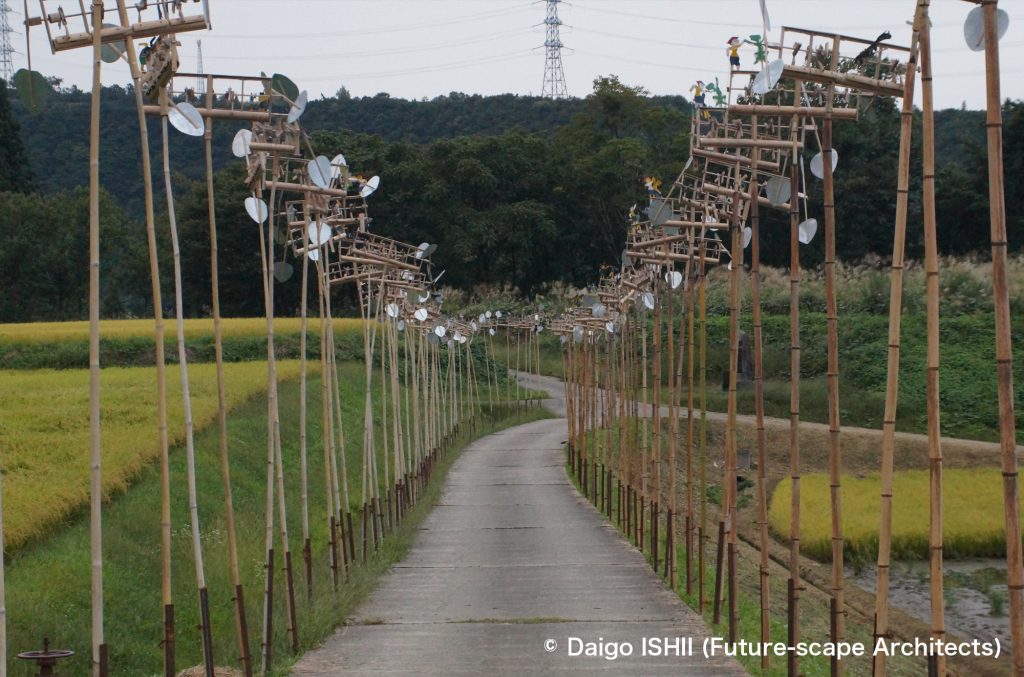


2018 Shuen Long LIN ”Beyond borders: bond” (No longer in existence)
This artwork was created in the forest of the Anayama district. Various objects made in collaboration with the local residents using woven rice straw were installed in the forest. The theme of the work seemed to be to create a connection between nature and people, but it awakened the hidden power of the forest, creating a sacred place.
English Website

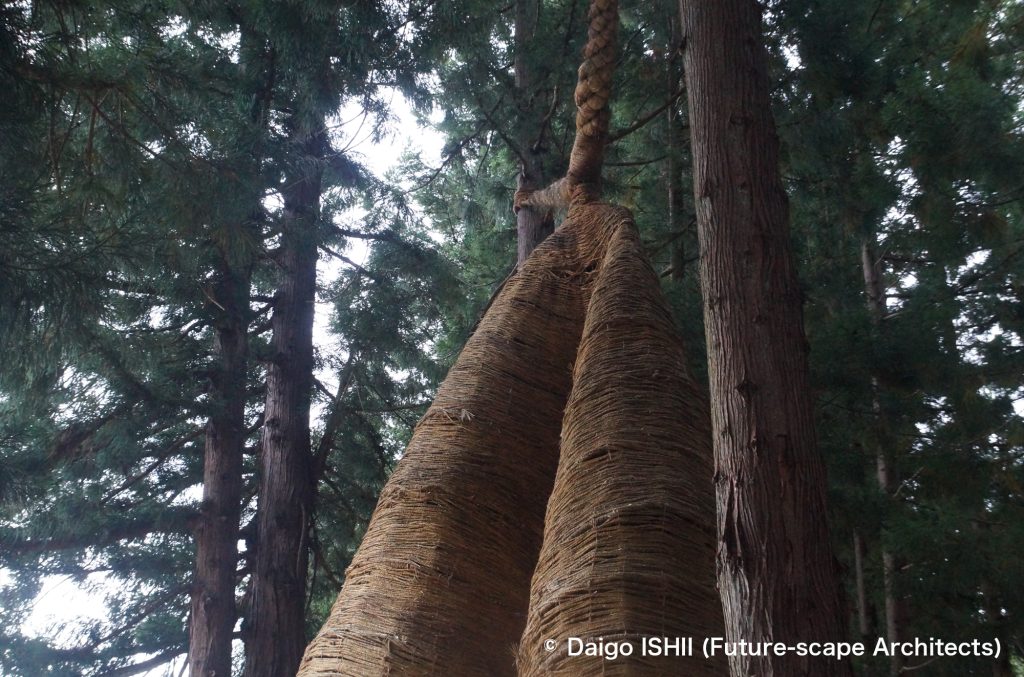
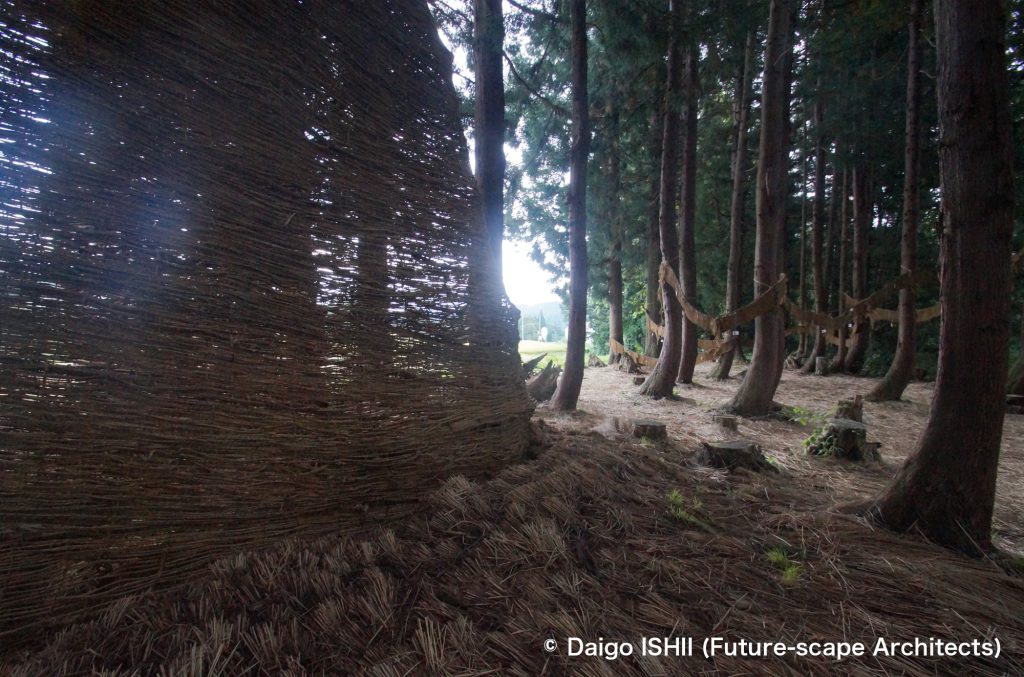
Artworks in Matsudai NOHBUTAI Field Museum
Matsudai NOHBUTAI Filed Museum, which core building was designed by MVRDV, composes of rice fields, river, hills, and Matsudai Castle at the top of the hill and are dotted with art in a vast area. The accumulation of various artworks makes the whole place into landscape art. Among the Echigo-Tsumari Art Triennale venues that are difficult to access without a car, this place is adjacent to Matsudai Station on the Hokuhoku Line, making it easy for anyone to visit.
English Website
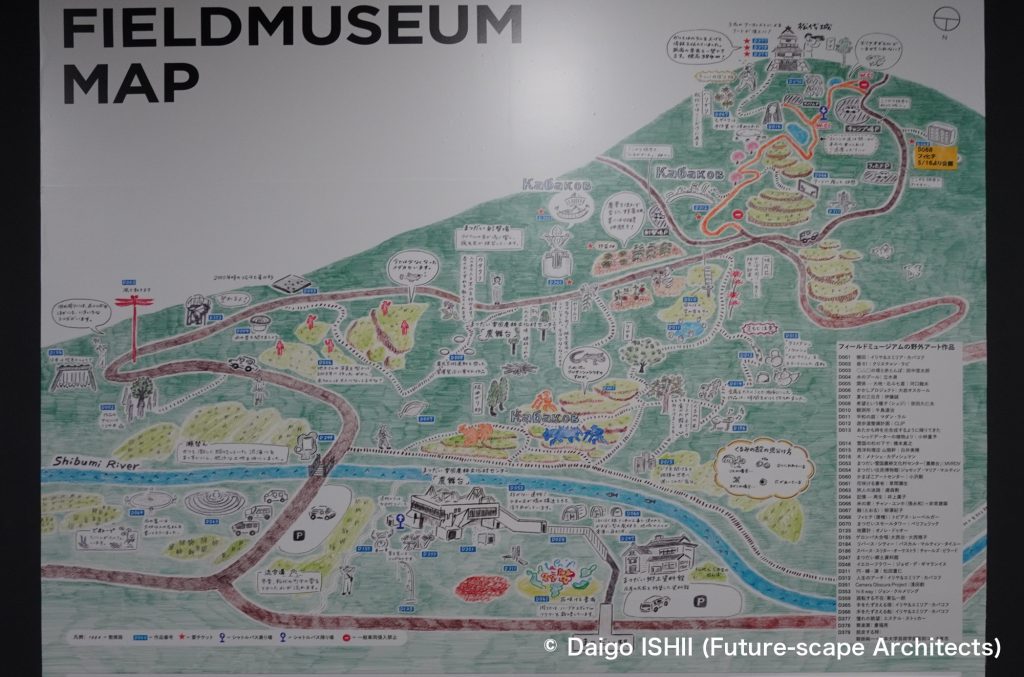
2000 Ilya & Emilia KABAKOV ”The Rice Fields” (Now opening except winter)
This work was installed in the field museum. Poems describing the rice cultivation process are drawn in the air with wire, and sculptures depicting rice cultivation work are installed on the rice terraces on the opposite side across the river. When viewed from the terrace of NOHBUTAI, the poem and sculpture blend together to become one work of art.
English Website
https://maps.app.goo.gl/mbngKXbGSZnyJ8yw8
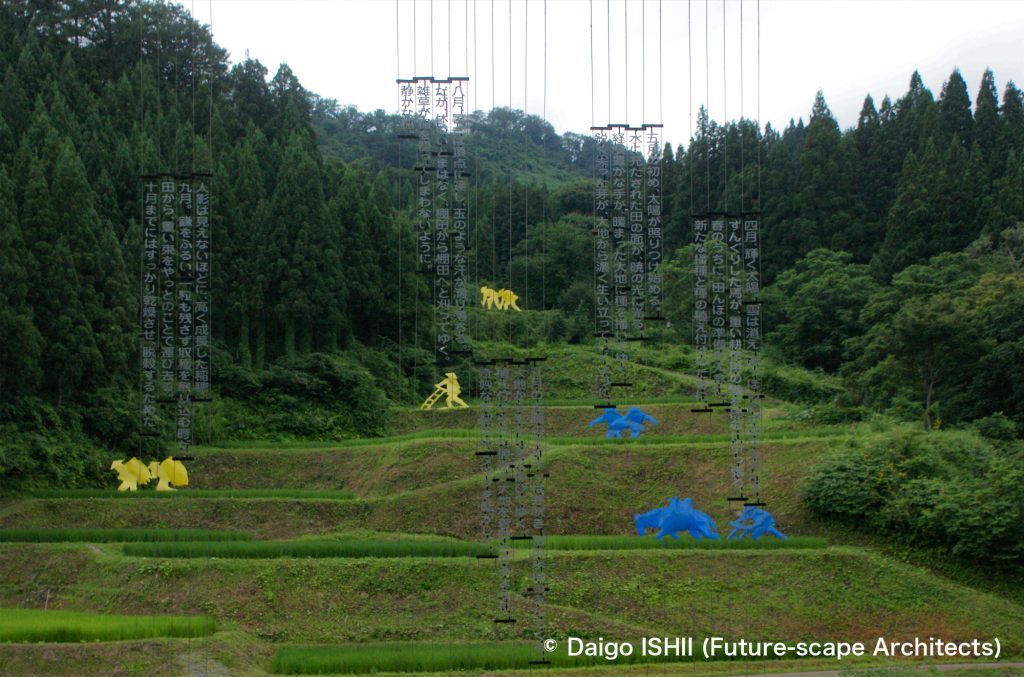
2000 Christian LAPIE ”Fort 61” (Now opening except winter)
On the slope of the field museum, an enclosure was built by lining up charcoal-burned wood, creating a tranquil place while still maintaining a connection to the outside world. In the distance, you can see Shintaro TANAKA's "The ○△□ Tower and the Red Dragonfly."
English Website
https://maps.app.goo.gl/vXLENYYQmoCw3G6h9
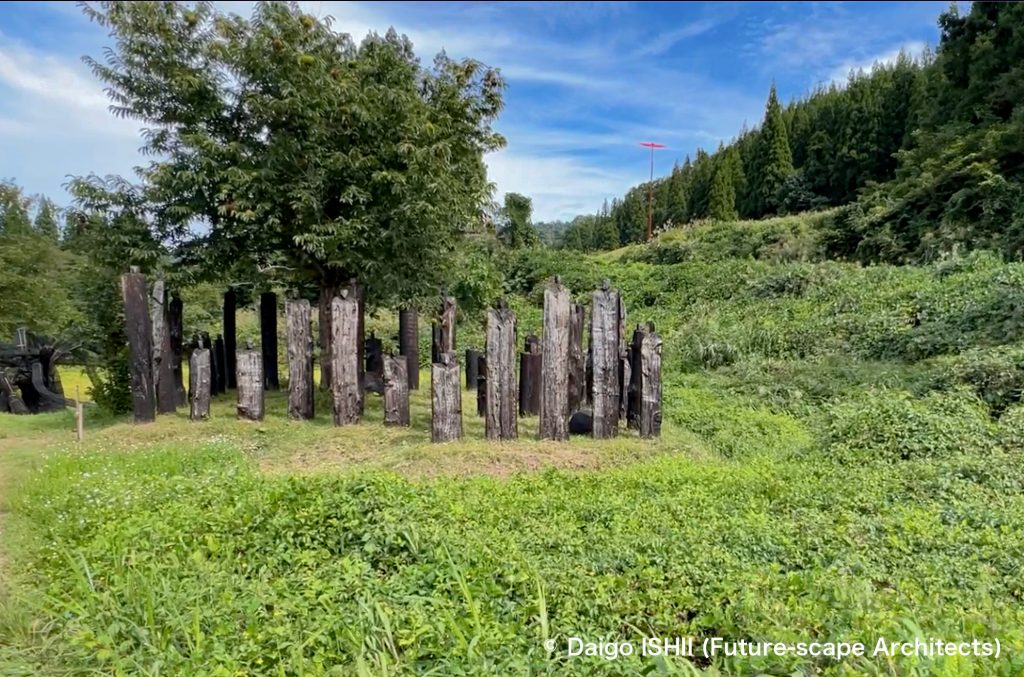
2000 Simon Beer ”Carpe Diem” (No longer in existence)
It is a snowman refrigerator created in 2000 in the middle of the Field Museum. It was fenced with a snow fence plate in 2015, but it was removed after that. I wonder if the snowman in the heavy snowfall area has melted in the summer heat after nearly 20 years. It's a shame because I liked the Columbus egg-like idea and the excellent title.
English Website
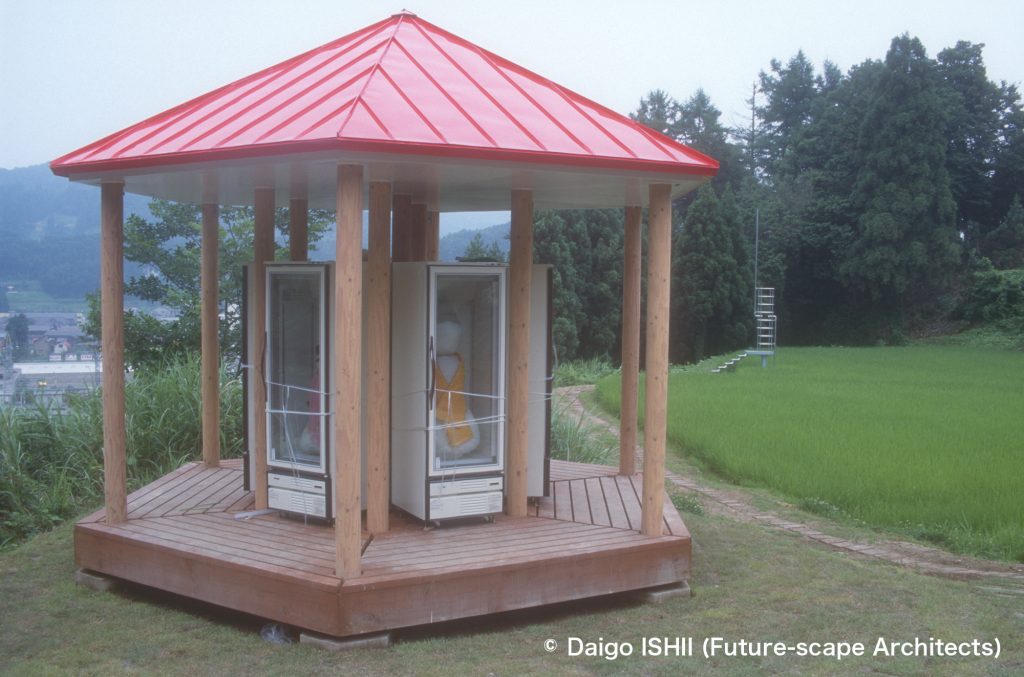
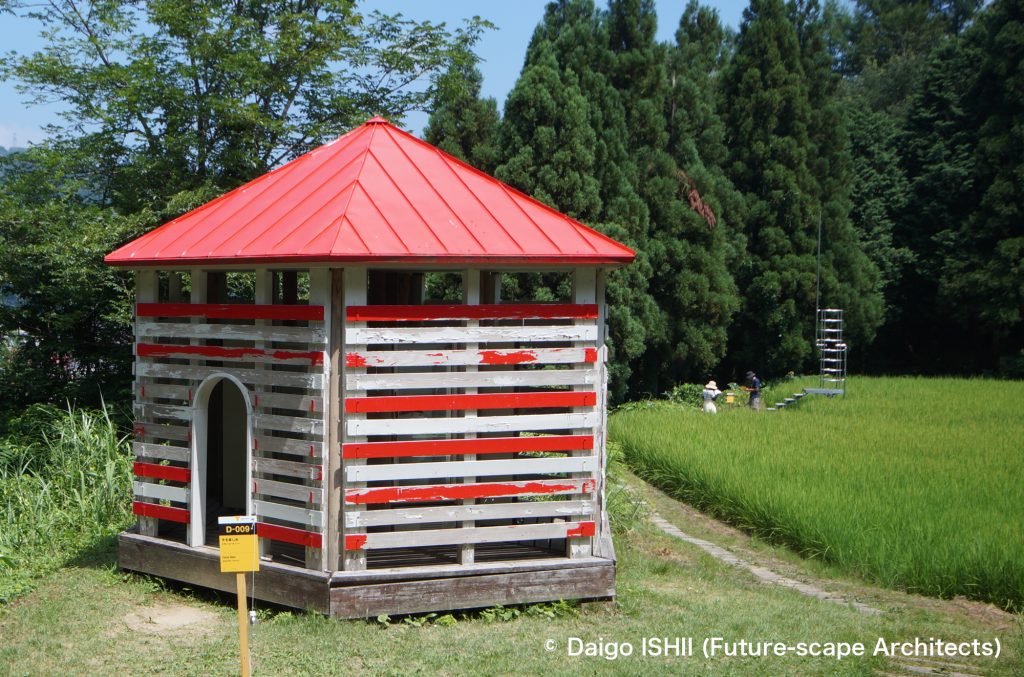
2000 Shintaro TANAKA ”The ○△□ Tower and the Red Dragonfly” (Now opening except winter)
It is a red dragonfly landmark standing tall on Square, round, and triangular columns that get thinner as they go up.
English Website
2009 Pascale Marthine TAYOU ”Reverse City” (Now opening except winter)
Huge pencils with the names of countries around the world written on them are hung upside down, suggesting the existence of a city standing in opposition to the satoyama (village-vicinity mountain) of the field museum.
English Website
https://maps.app.goo.gl/pPKMhkwEAzCTjMN36
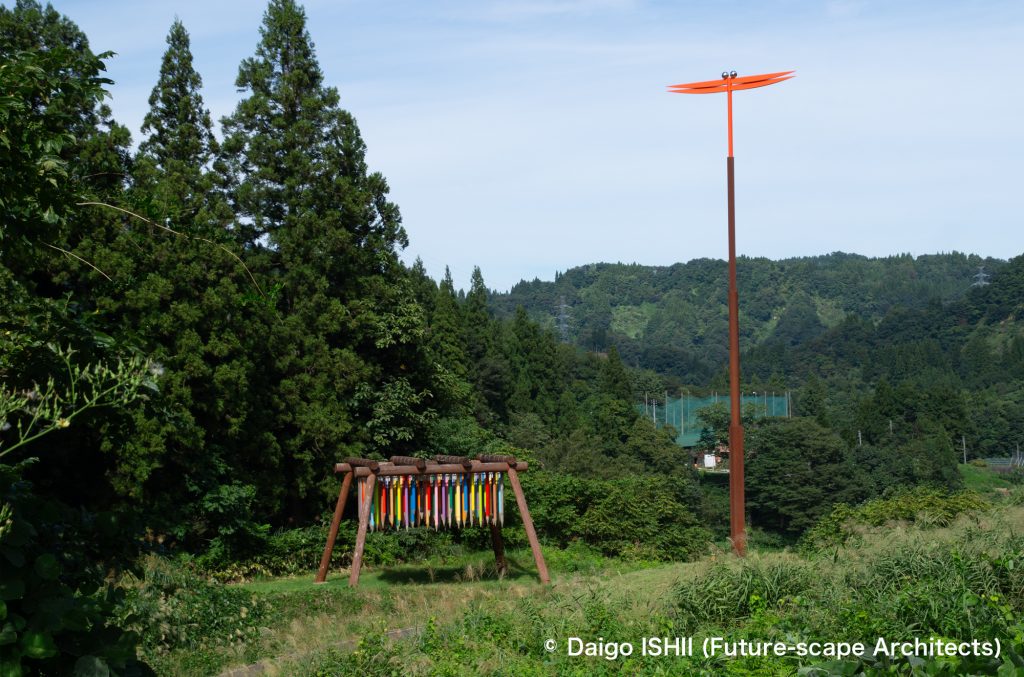

2000 Oscar OIWA ”Scarecrow Project” (Now opening except winter)
The red scarecrows that protect the rice terraces in the field museum were modeled after local residents.
English Website
https://maps.app.goo.gl/cXPXk1qiUf6pMUF29
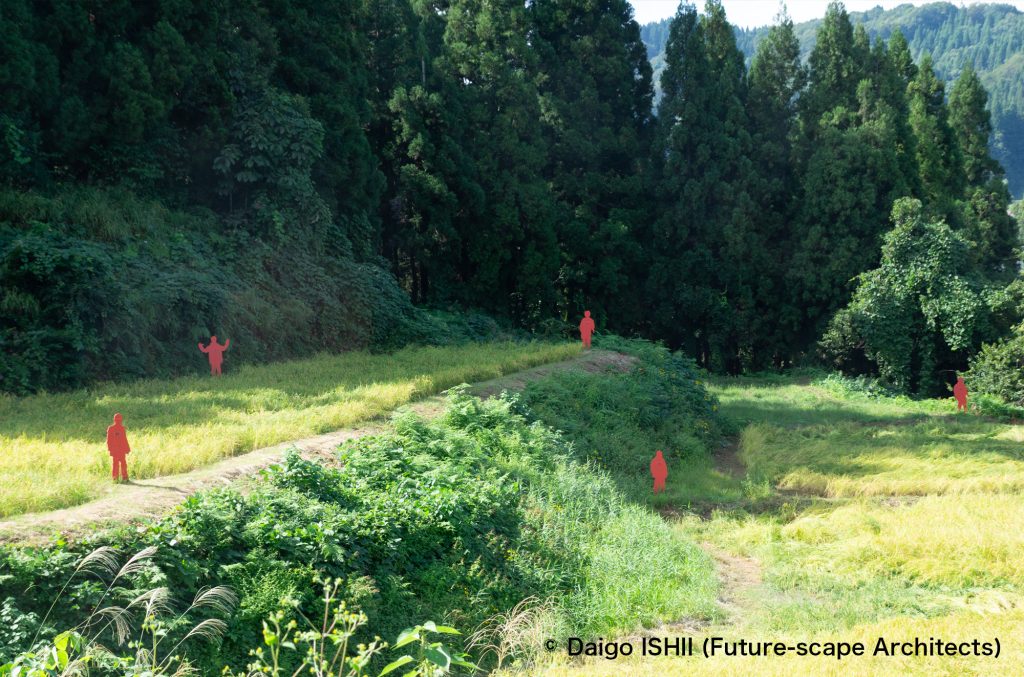
2000 Kunio YODA ”Seed of Hope” (Now opening except winter)
Four ceramic plaques engraved with writings by Miyazawa KENJI, famous Japanese author, were installed in the forest of the field museum.
English Website
https://maps.app.goo.gl/cXPXk1qiUf6pMUF29
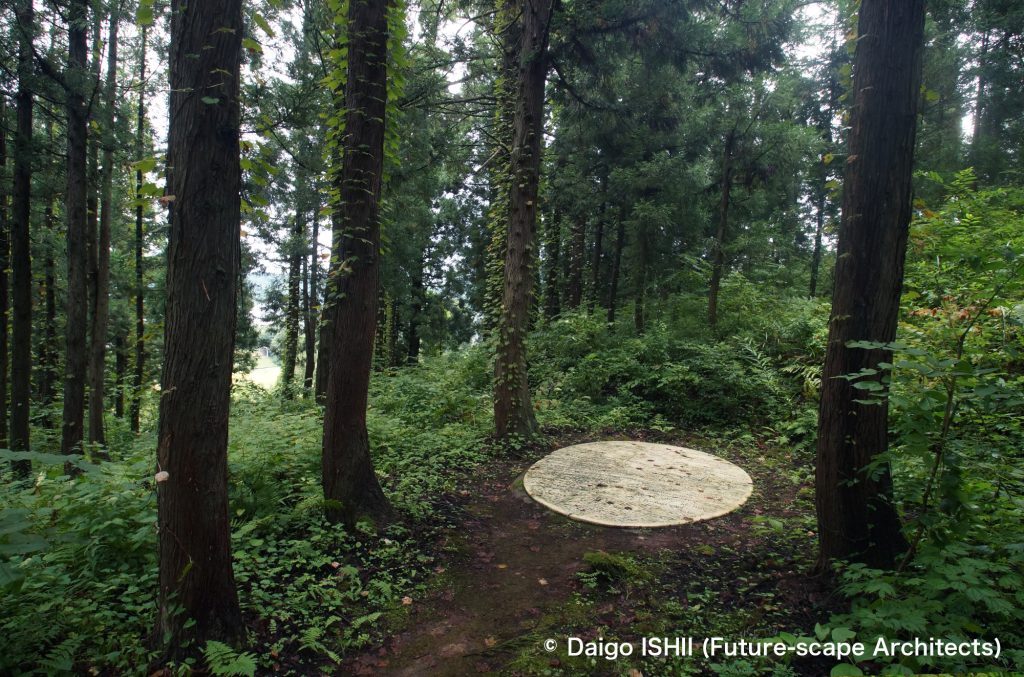
2000 Menashe KADISHMAN ”Trees” (Now opening except winter)
Weather-resistant steel panels were carved into the shape of trees to represent the trees at the Field Museum.
English Website
https://maps.app.goo.gl/SXgPkB4k4ZFnpygD8
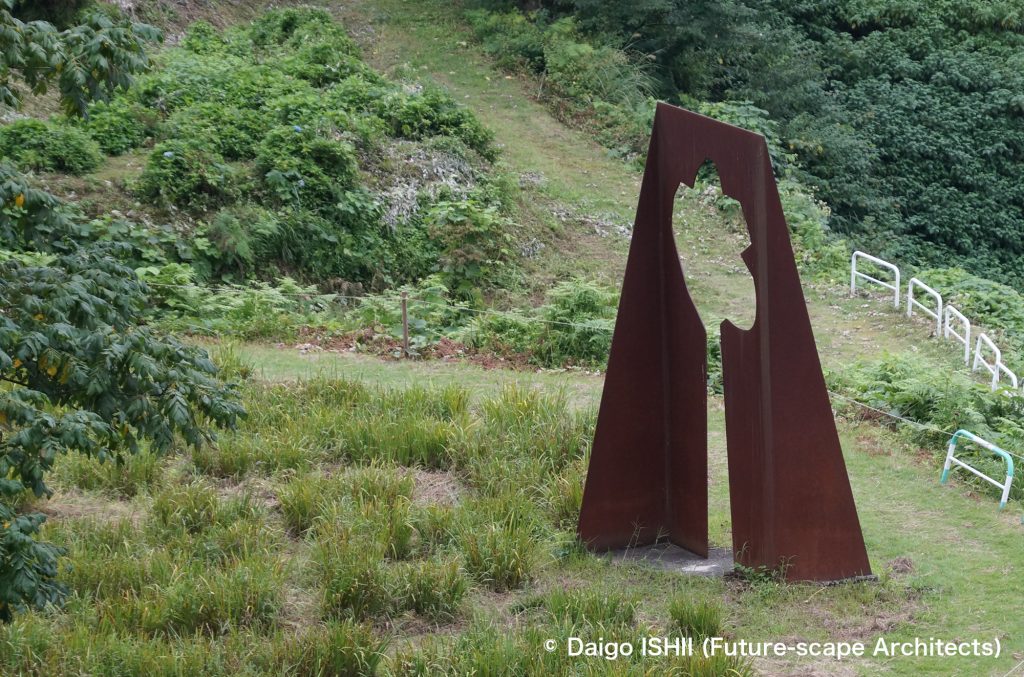
2000 CLIP ”Walk Way” (Now opening except winter)
This it the walk ways project on the slope at the Field Museum. It was designed to minimize the burden on the ecosystem.
English Website
https://maps.app.goo.gl/6n9BXAUG6CeXjTFn6
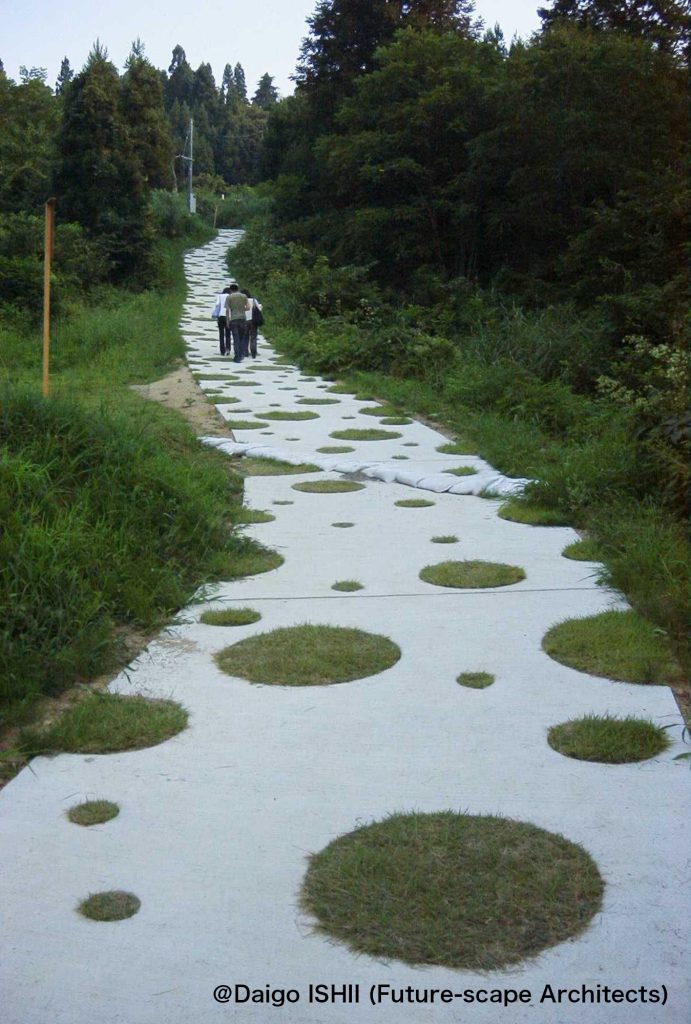
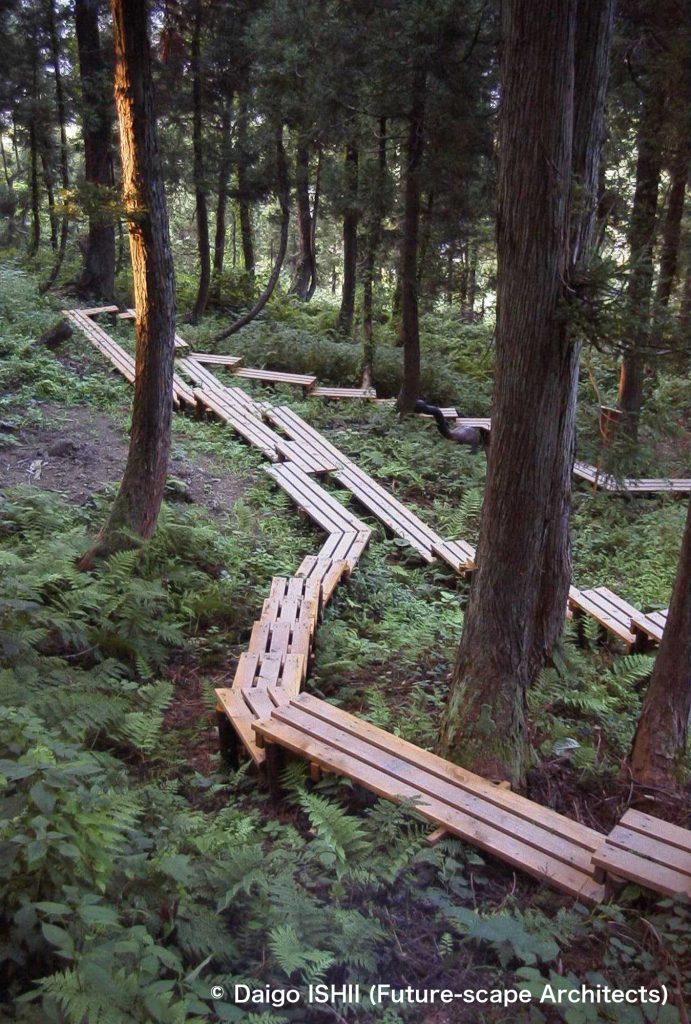
2003 Tobias REHBERGER ”Fichte” (Now opening except winter)
This work is a library in the forest. The shelves are filled with German literature translated into Japanese.
English Website
https://maps.app.goo.gl/yQbGoGreB5mVD1gy7
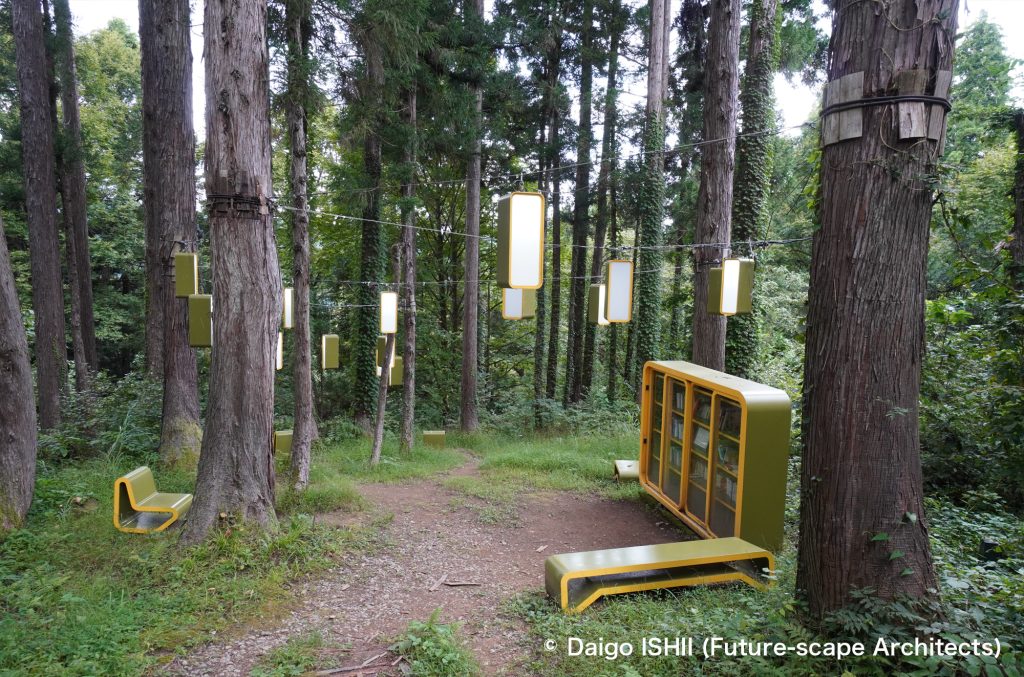
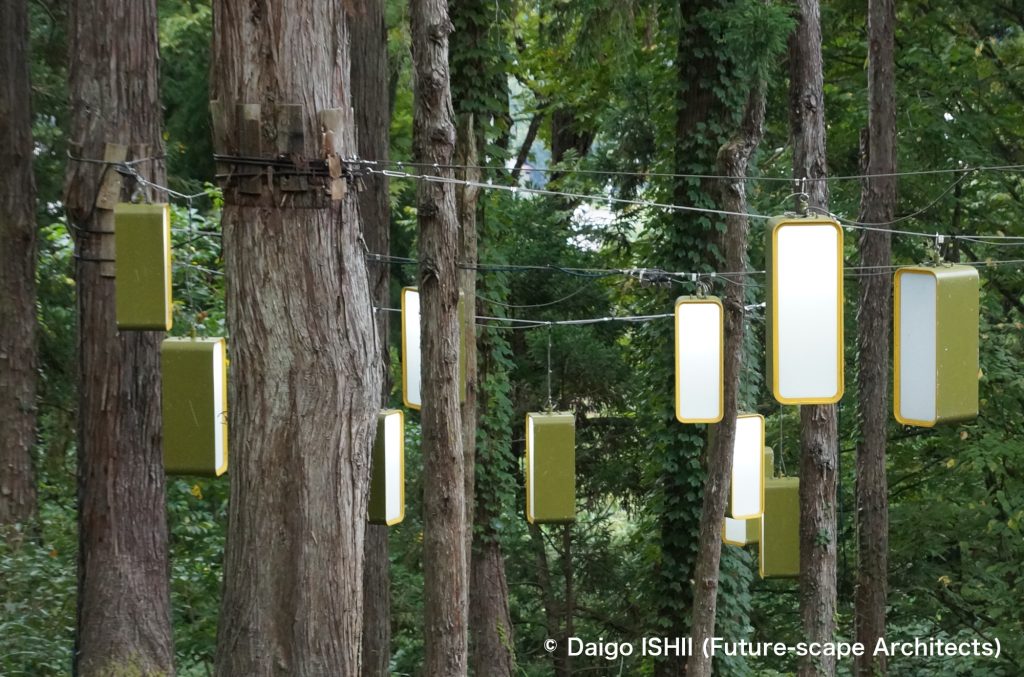

2015 Ilya & Emilia KABAKOV ”The Archi of Life” (Now opening except winter)
This work was installed at the Field Museum. Five statues representing different stages of life, from birth to old age, are installed on top of the arch.
English Website
https://maps.app.goo.gl/NHBXKToJt4Xy77TY9
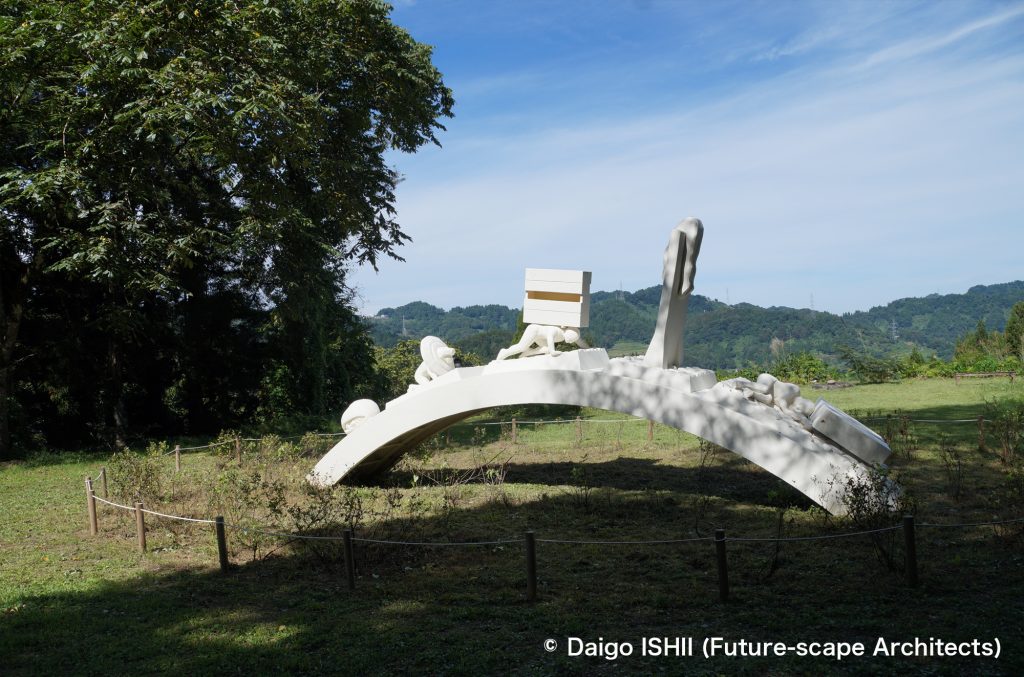
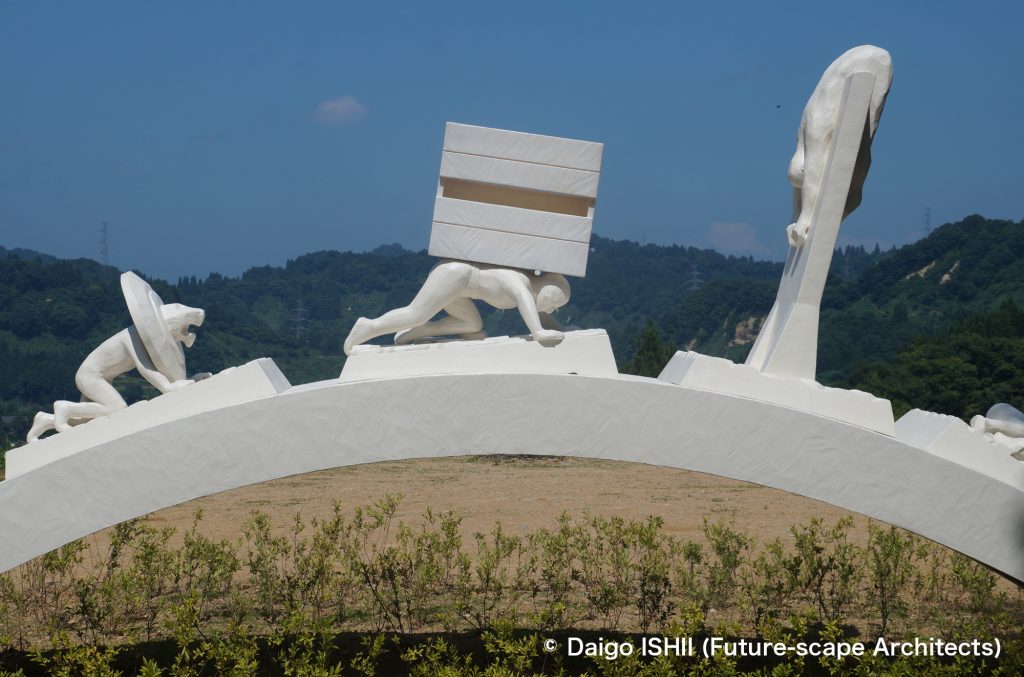
2022 Rishi OTSUKA ”Kingdom” (No longer in existence)
Straw rope objects woven around bamboo cores were dotted throughout the forest at the Field Museum.
English Website
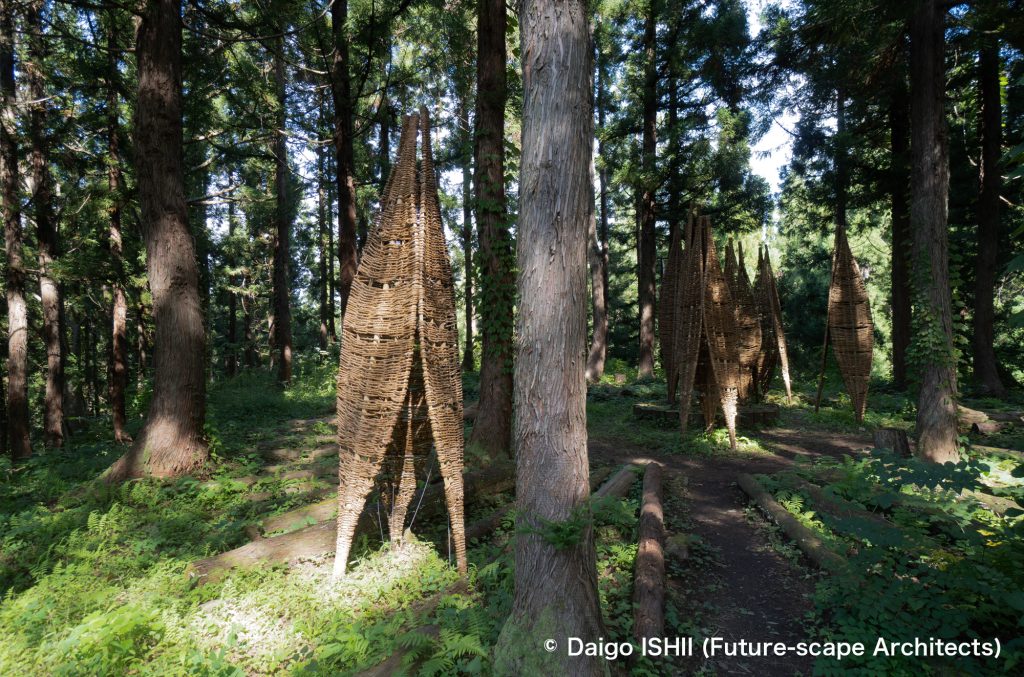
2021 Matsudai Castle (Now opening except winter)
Long ago, there had been a simple, one-story mountain castle on this site, but in 1981 a castle tower was built, without any historical basis, as a tourist observation deck. Located quite high up the mountain path, it did not attract many tourists, but the fact that it was a building with no cultural value allowed three artists to freely create works on its three floors. An attractive focal point has been created at the pinnacle of Matsudai NOHBUTAI Field Museum, which has transformed the entire mountain into landscape art.
https://maps.app.goo.gl/Pmv61MeJsj2FP2keA

2021 Esther STOCKER ”Perspectives of Longing” (Now opening except winter)
This work occupies the entire first floor of Matsudai Castle. A distorted lattice space is inserted into the black and white lattice coordinate area, creating a space that resembles a distortion in space-time.
English Website
https://maps.app.goo.gl/Pmv61MeJsj2FP2keA
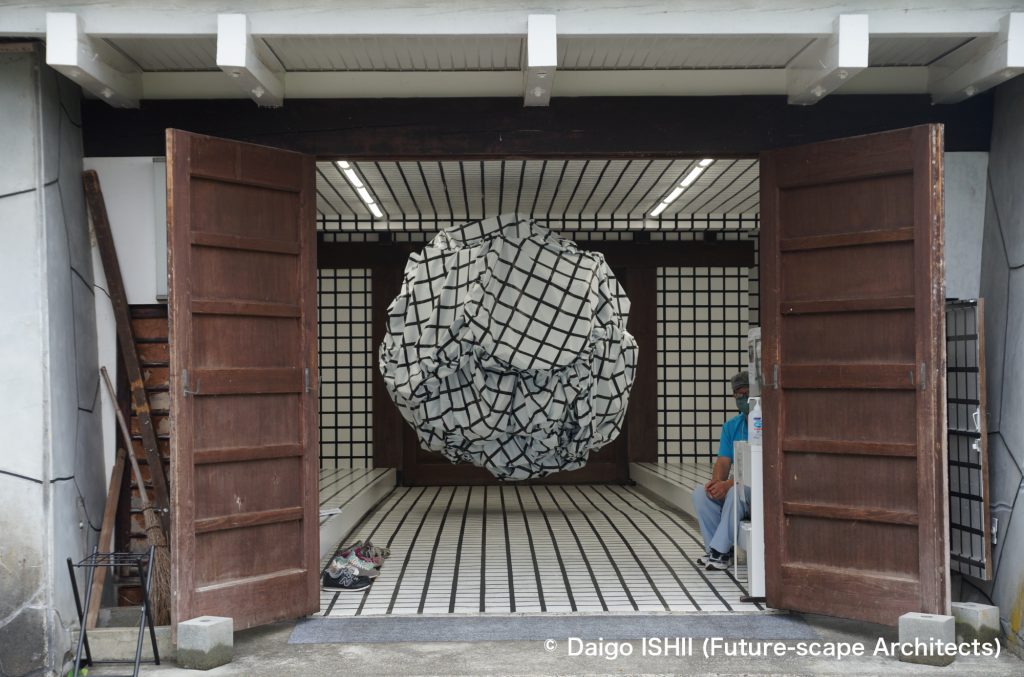
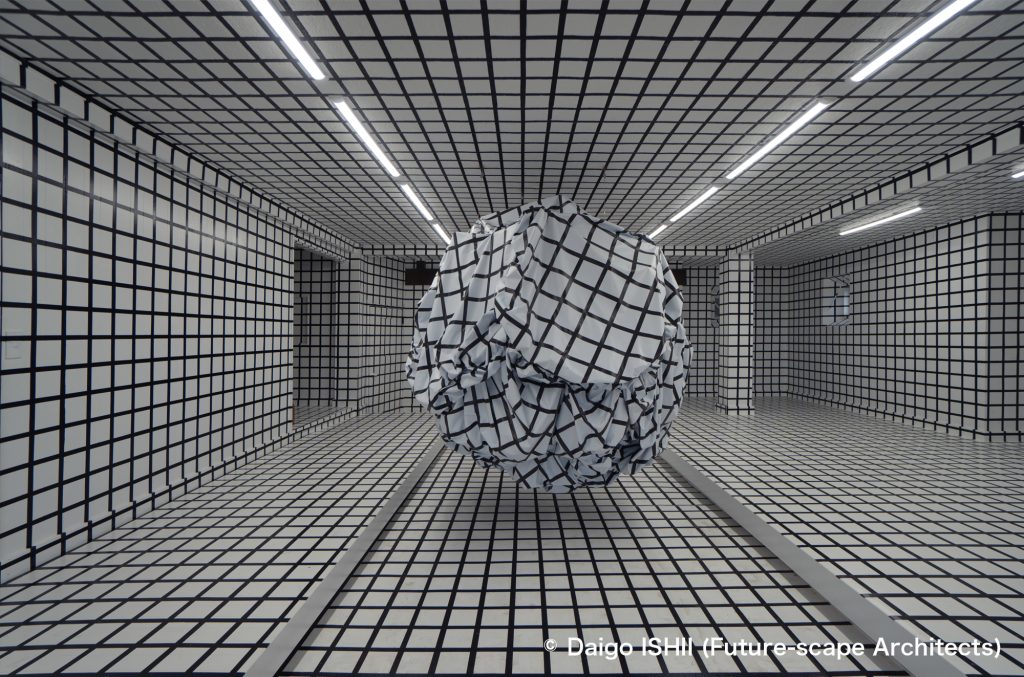
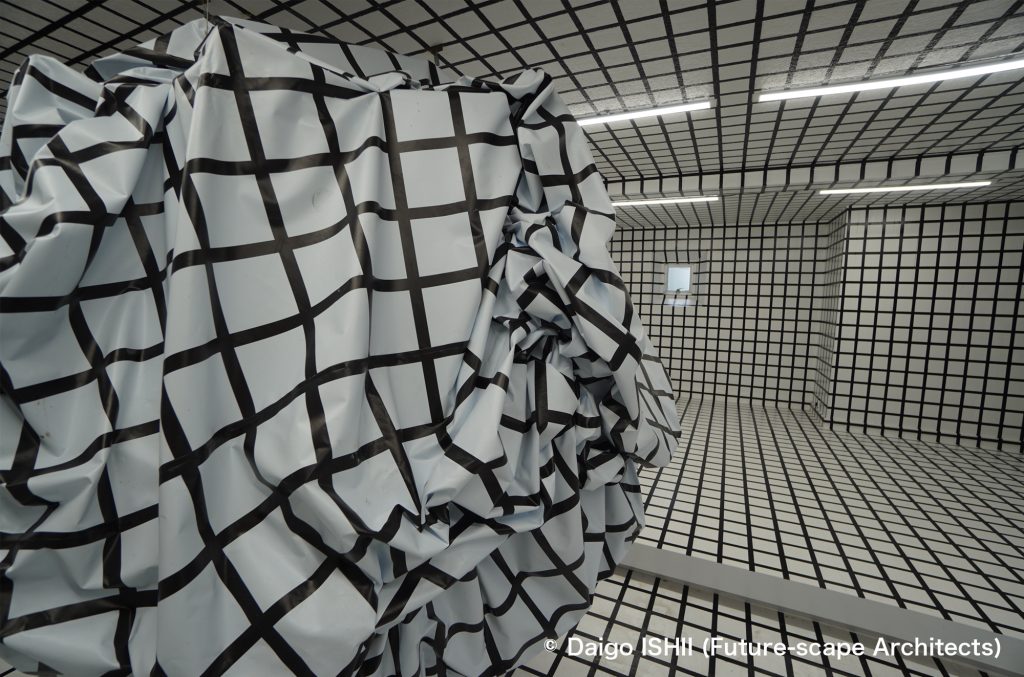

2021 Ryo TOYOFUKU ”Laxudai” (Now opening except winter)
This work occupies the entire second floor of Matsushiro Castle. A gorgeous and luxurious tea room decorated with gold leaf in a silver leaf space that is closed off from light.
English Website
https://maps.app.goo.gl/Pmv61MeJsj2FP2keA

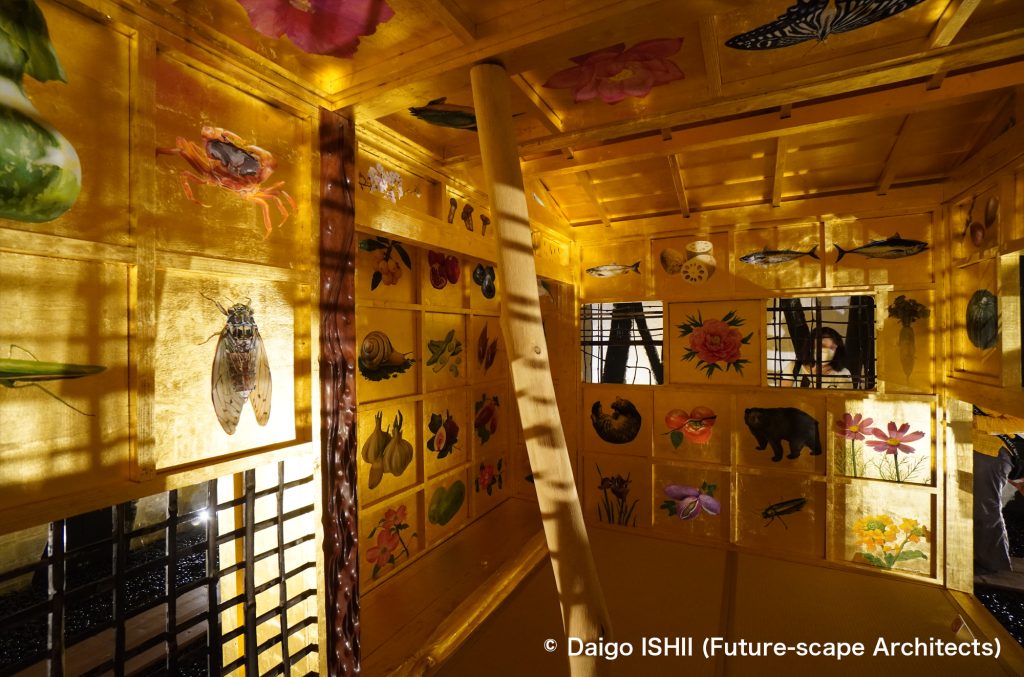
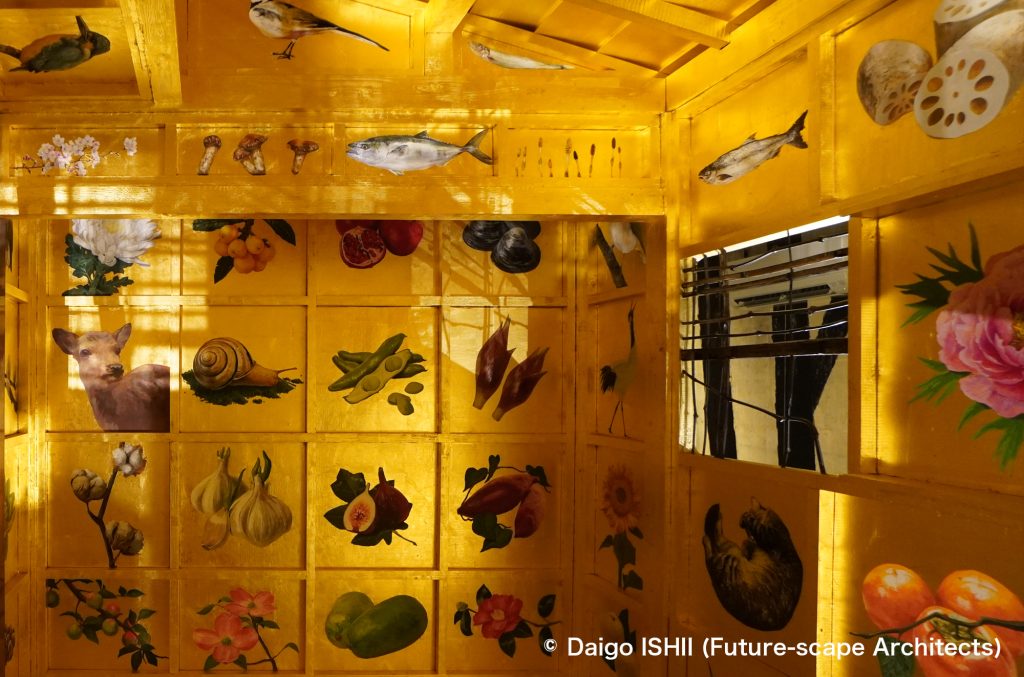
2021 Junichi KURAKAKE + Nihon University College of Art Sculpture Course ”Shedding Time” (Now opening except winter)
This work occupies the entire third floor of Matsudai Castle. A gold seating area stands out against the black interior. Windows on all four sides open onto the landscape, which is reflected in the black and gold interior.
English Website
https://maps.app.goo.gl/Pmv61MeJsj2FP2keA

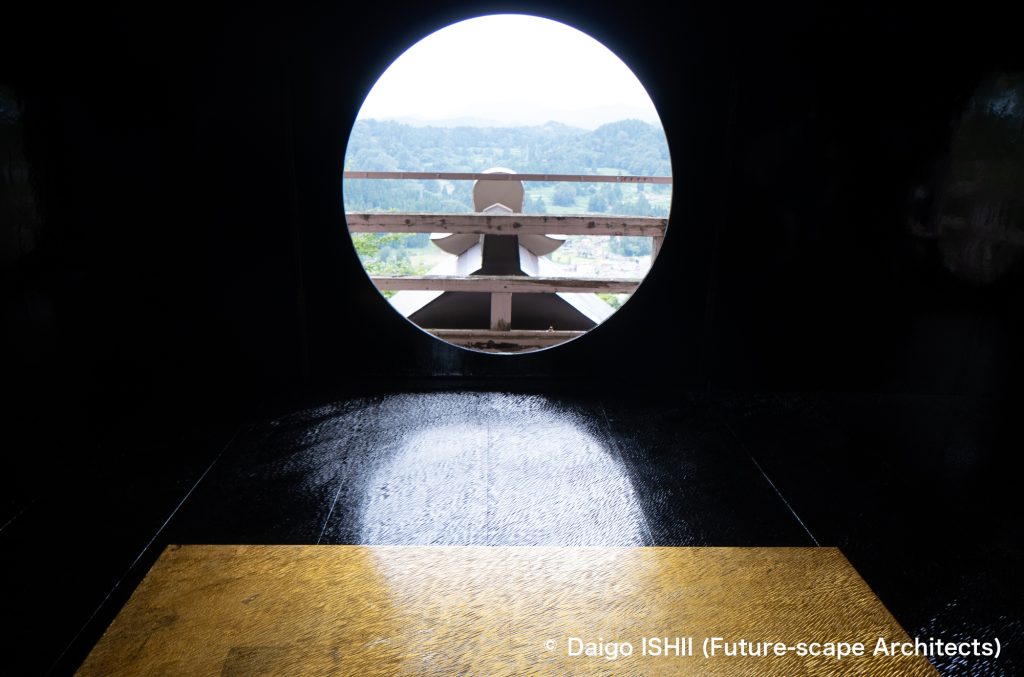
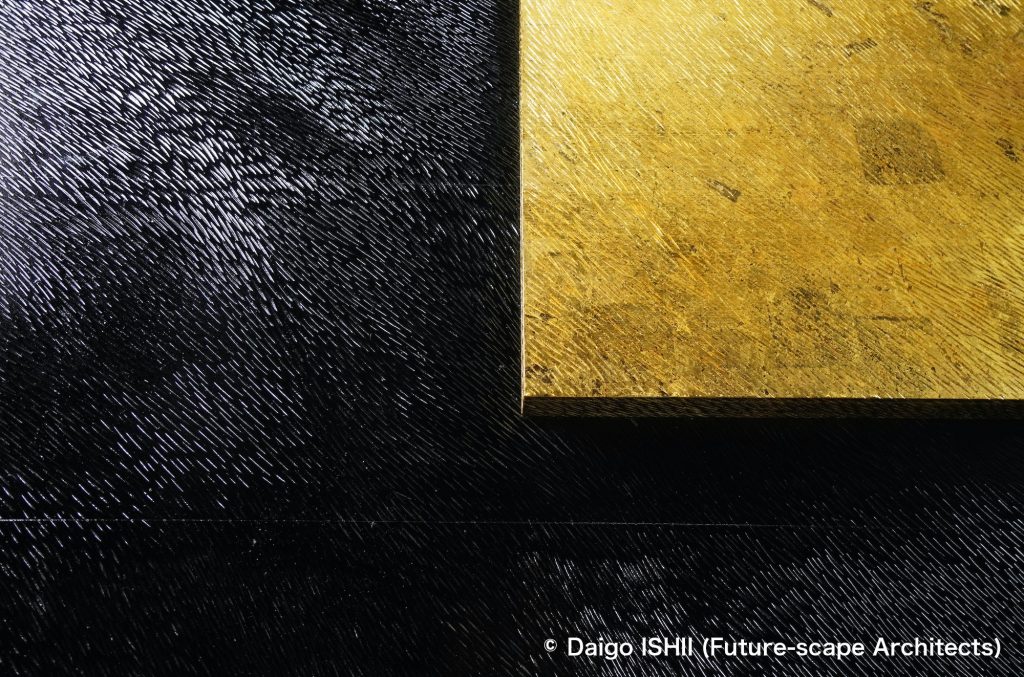
Artworks by Yukihisa ISOBE
Since the first Echigo-Tsumari Art Triennale held in 2000, Yukihisa ISOBE has been presenting landscape art based on the history and culture of Tsumari at every event.
2003 Yukihisa ISOBE ”The Shinano River once flowed 25meters above where it presently flows” (No longer in existence)
15,000 years ago, the Shinano River flowed at a height 25 meters higher than it is today, but due to years of erosion, it now flows at its current height. The change in the river's height since 15,000 years ago was recorded on scaffolding set up on the slope.
English Website
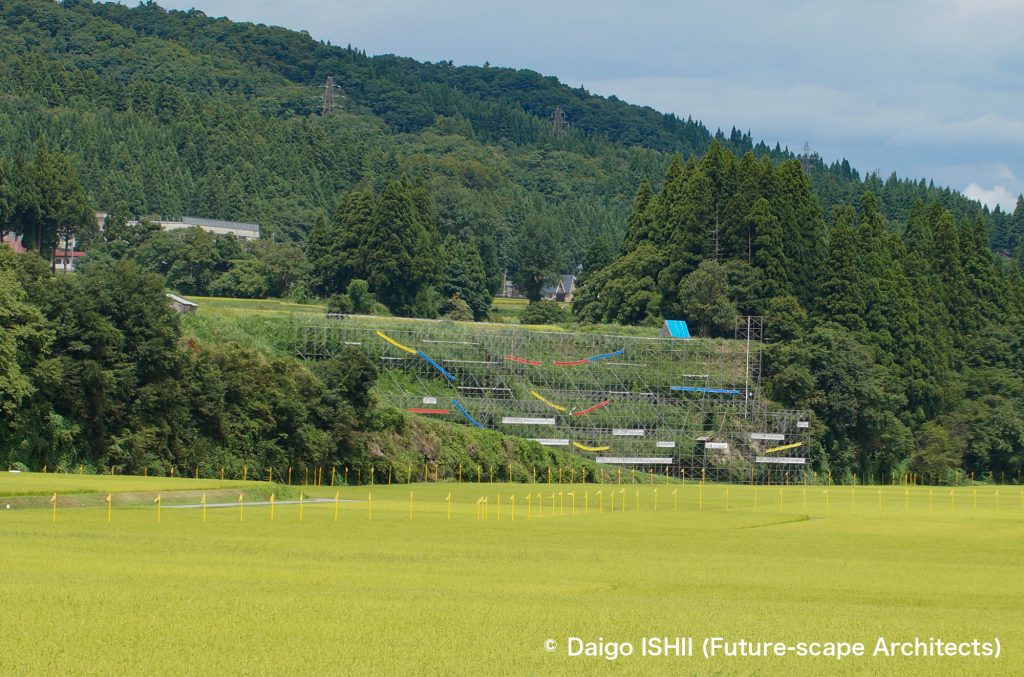
2018 Yukihisa ISOBE ”A Monument of siphon” (No longer in existence)
An underground conduit for hydroelectric power generation runs from Tokyo Electric Power Company's Shinano-gawa River Power Station in the Tatsunokuchi district, and ISOBE has visualized the flow and sound of the water.
English Website
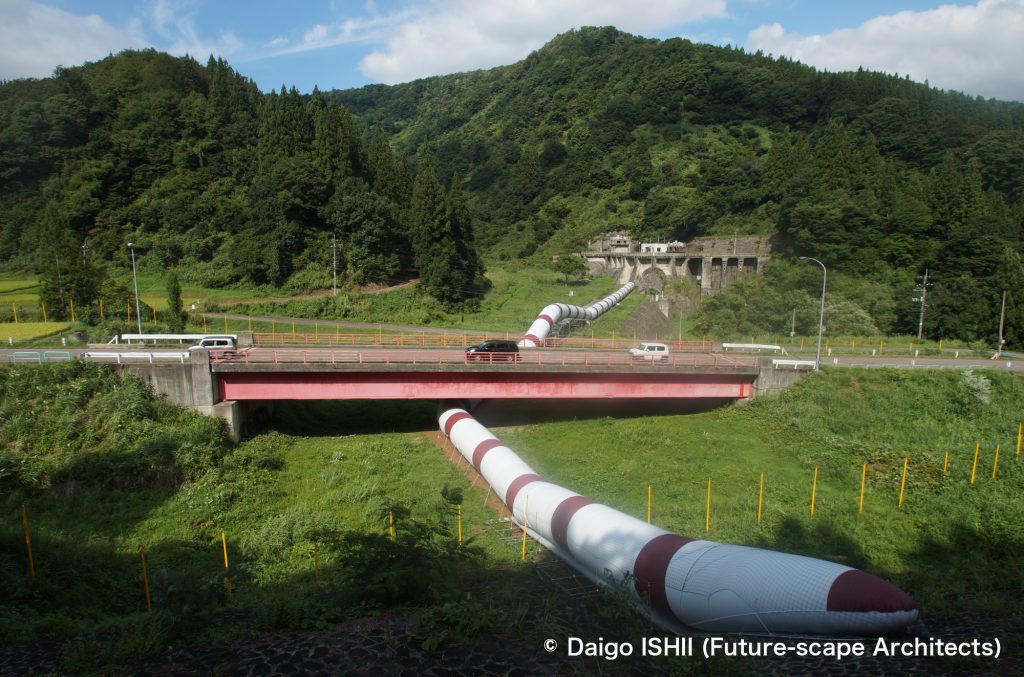
2022 Yukihisa ISOBE ”It was all fun in the past - from cultural anthropological fieldwork” (No longer in existence)
Based on a field survey of the Kotsunagi community in Tokamachi, which closed in 2007, ISOBE recreated the small paths the residents used daily within the village with yellow poles. During the event, former residents served as guides and spoke about life in the village.
English Website
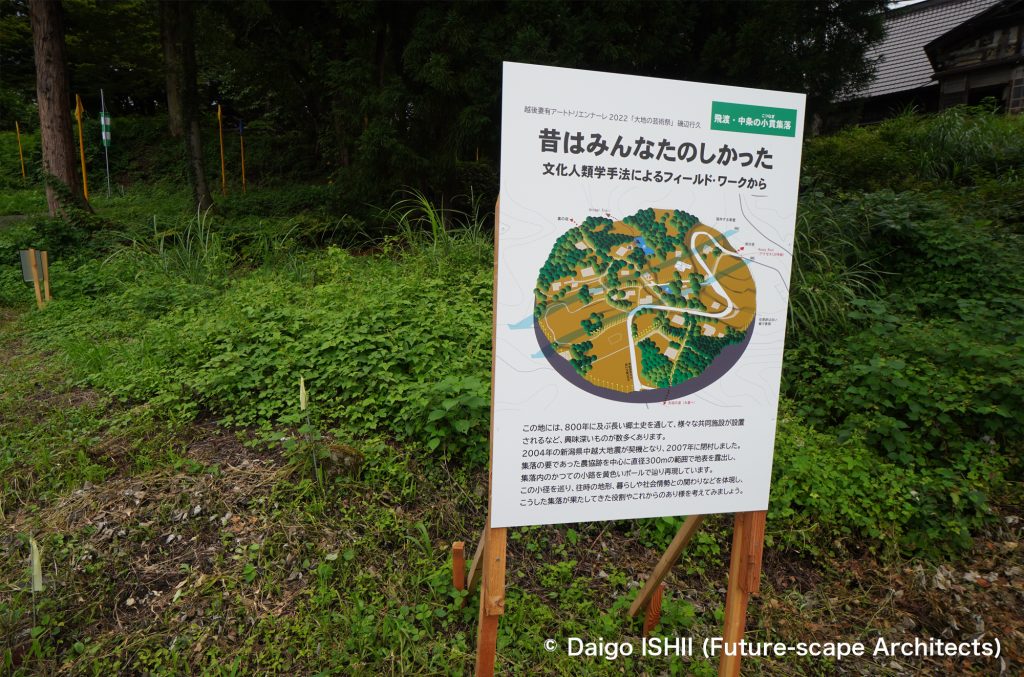
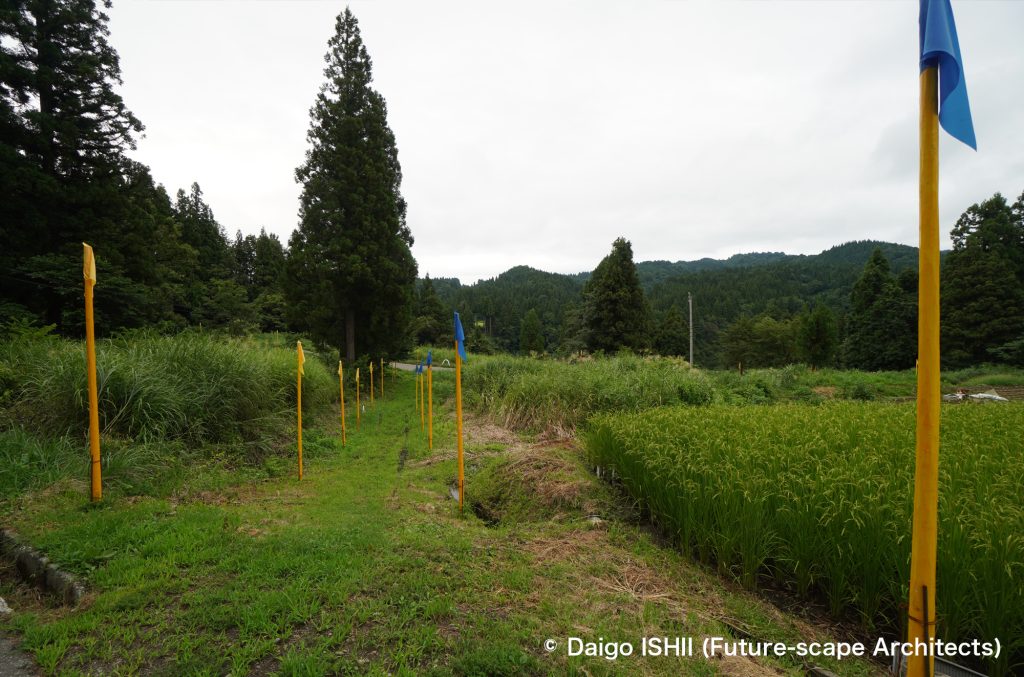
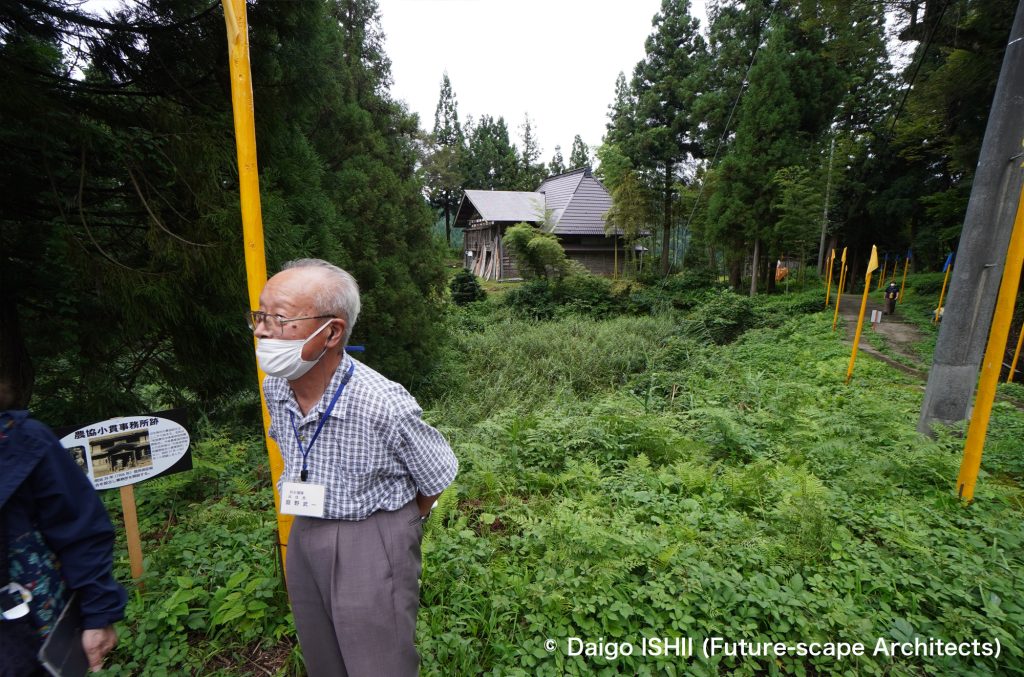
Click here for your impressions
reference
"越後妻有アートネックレス整備事業計画書"(アートフロントギャラリー,1999)
"大地の芸術祭 越後妻有アートトリエンナーレ2000"(越後妻有大地の芸術祭実行委員会,2000)
"大地の芸術祭 越後妻有アートトリエンナーレ2000"(越後妻有大地の芸術祭実行委員会,2001)
"大地の芸術祭 越後妻有アートトリエンナーレ2003 ガイドブック"(大地の芸術祭・花の道実行委員会東京事務局,2003)
"越後妻有アートトリエンナーレ2006 大地の芸術祭ガイドブックー美術手帖2006年7月号増刊"(美術出版社,2006)
"公式ガイドブック 大地の芸術祭アートをめぐる旅ガイドー美術手帖2009年8月号増刊"(美術出版社,2009)
"現代美術がムラを変えた 大地の芸術祭"(北川フラム,角川学芸出版,2010)
"美術は地域をひらく 大地の芸術祭10の思想"(北川フラム,現代企画,2014)
"公式ガイドブック 大地の芸術祭 越後妻有アートトリエンナーレ2015"(現代企画室,2015)
"大地の芸術祭 越後妻有アートトリエンナーレ2018 公式ガイドブック"(現代企画室,2018)
"大地の芸術祭 越後妻有アートトリエンナーレ2022 公式ガイドブック"(現代企画室,2022)
"大地の芸術祭 越後妻有アートトリエンナーレ2022 公式ガイドブック"(現代企画室,2024)
大地の芸術祭ウェブサイト
Echigo Tsumari Art Field Website
Wikipedia
Please do not use or upload our photos without permission.



